The Cho Family Re-Discovered
by Norman Cho
The search for my family tree has been an exhilarating adventure for me…
It all began with the discovery of my late paternal grandfather’s (Cho Kim Leong) grave at Bukit Brown in Nov 2011 after a long and arduous search for it. The construction of his tomb began soon after this discovery. This was followed by more discoveries about the man (Kim Leong) himself, through family documents, interviews with those who remember him and through the artefacts that he left behind. My exciting journey in the search for my ancestors was chronologically recounted in the All Things Bukit Brown blog as more and more interesting events unfolded.
It has indeed been a blessing for me, when the spouse of a newly-discovered cousin, Richard Brockett, unexpectedly contacted me in Facebook. It was a bolt out of the blue! They were from Australia and were the descendants of my granduncle, Cho Kim Choon. Incidentally, he was reading the blogs that were posted in the All Things Bukit Brown blog. Recognising the names mentioned in the blog and touched by the accounts that I had recounted, he decided to contact me. He had just finished working on his family tree and is now working on his wife’s family tree. We were perfect in seeking each other’s help to piece together the “Cho Family Jig-Zaw Puzzle”! Somehow, I believe in grandfather’s divine intervention in making this happen.
Their family had kept a treasured family portrait of my great-grandfather, Cho Poo, with his wives and 5 sons, taken at their family home in Hereen Street, Malacca, circa 1920s. He kindly emailed me a copy of this cherished family portrait with the only known image of Cho Poo and of his wives. Finally, I was able to see my paternal great-grandparents for the very first time. The feeling was indescribable.
Great-grandfather looked stern. My great-grandmother (wife #3), Kong Moey Yean, who was dressed in a dark baju-panjang seated on the left of the picture, looked pretty much the regal matriarch. All the sons are dressed in western suit and positioned in chronological order of seniority from left to right – Kim Choon, Keow Teng, Kim Leong (my Grandfather), Kim Tian and the little boy Kim Hock who is standing beside wife #2. Like many affluent families in the Straits Settlement whose sons received an English education, they wore western suits. Although, thought to be English-educated, Cho Poo still remained a traditionalist by wearing Chinese attire in this photo. A fairly wealthy man, Cho Poo reportedly sold 5,000 acres of land in Seremban in 1895. He was a pioneer in tapioca, gambier and rubber planting who died in 1932. Little else was known about the man. Hopefully, more will be revealed as I track down more relatives from his 5 sons…
I had never thought that I would come this far… but with faith and perseverance, I know that more good things will come my way.
Editors Note: We are gratified that Norman was able to connect with a long lost cousin all the way from Australia through our blog. We salute Norman for his faith and perseverance.
Read more tips from on how to trace your ancestry from Norman here
Norman has also contributed posts on Peranakan customs and culture. Here’s a list you can click on
Pantuns , Bangsawan in Singapore , Peranakans in Mourning
Dateline: Sunday 17th March, 2013 – 2pm-4pm
Project: A Community Service by Pack 3017 of the Cub Scouts of America (age 7-11 years) to “spring clean” the tombs on Hill 1, supported by the Brownies.
The project began with showers of blessings, that came and went. Undaunted, about 30 cub scouts accompanied by their parents cleaned up some 40 tombs on Hill 1.
Their timing was perfect, 2 weeks before the annual Qing Ming festival when descendants spruce up tombs to honour the memory and contributions of their ancestors.
Thank you Cub Scouts of America for honouring the pioneers of Singapore at rest in Bukit Brown A meaningful job well done.
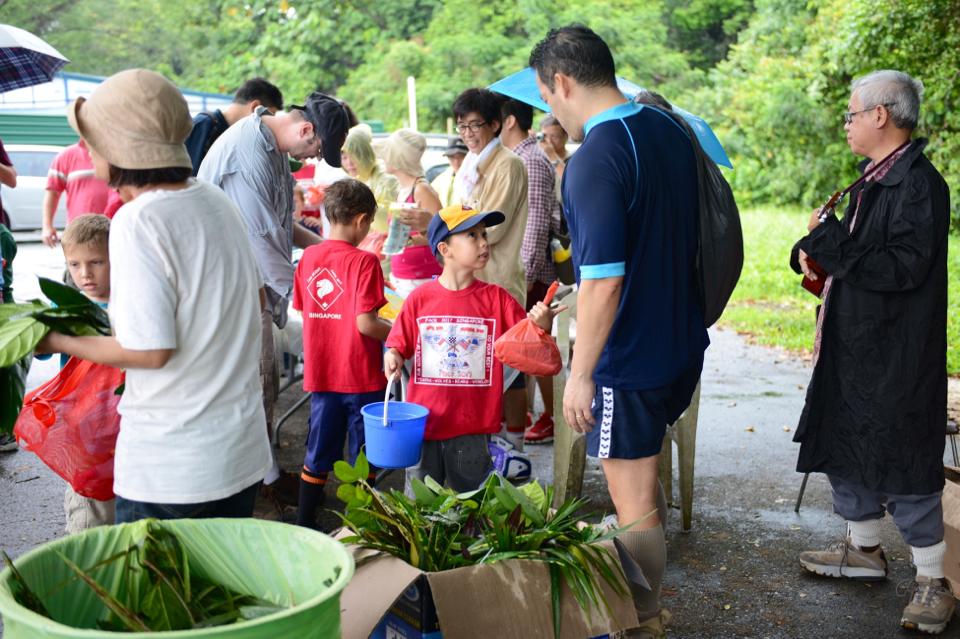
Collecting their cleaning kits which included “green” brooms from the branches of a fallen tree at BB (photo Gan Su-Lin)
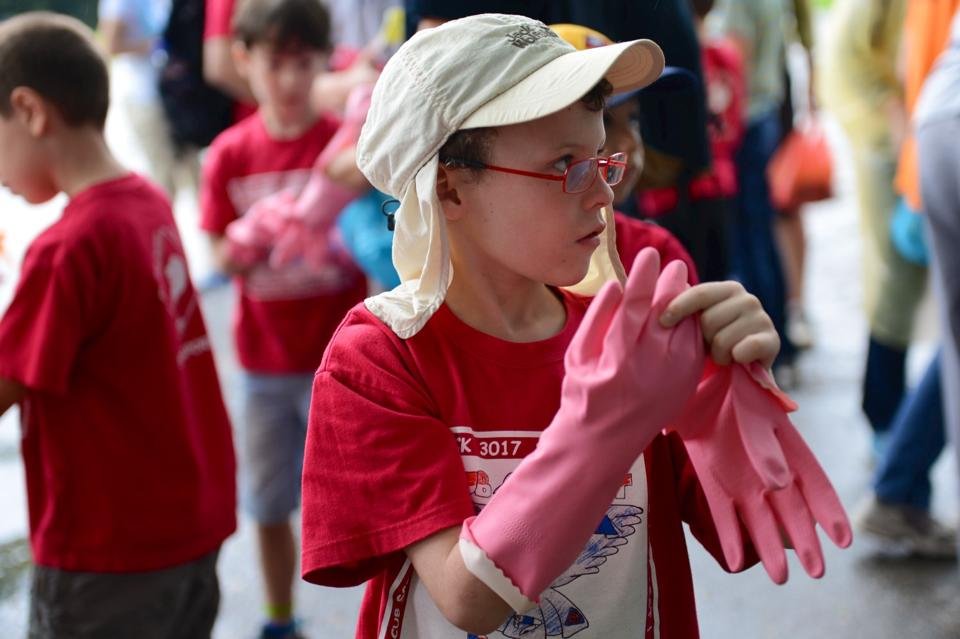
Gloves on! We are handling diluted chemicals needed for a good scrub without eroding stone or inscriptions (photo Gan Su-Lin)
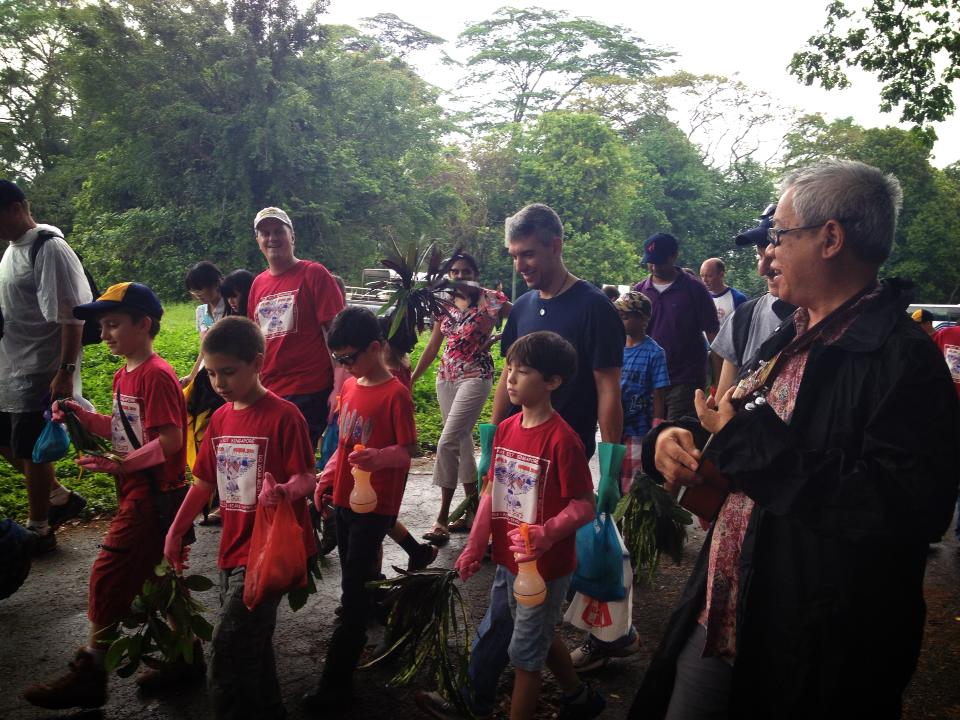
Eternal scout, Lim Su Lin -the wandering minstrel of Bukit Brown, sending off the cubs (photo Raymond Goh)
Finally, the cleaning begins with much vigour and diligence!

Replenishing water needed to wash down the tombs. An estimated 10 tubs of water had to be transported from main taps at the entrance. (photo Gan Su Lin)
And indeed, the whole pack did a brilliant job in the final reveal
When this photo was posted on the Bukit Brown Facebook Group, Madelene Seow said “Please send my appreciation & thanks to the cub scouts.” She is the great great granddaughter of Siow Cheng Watt.
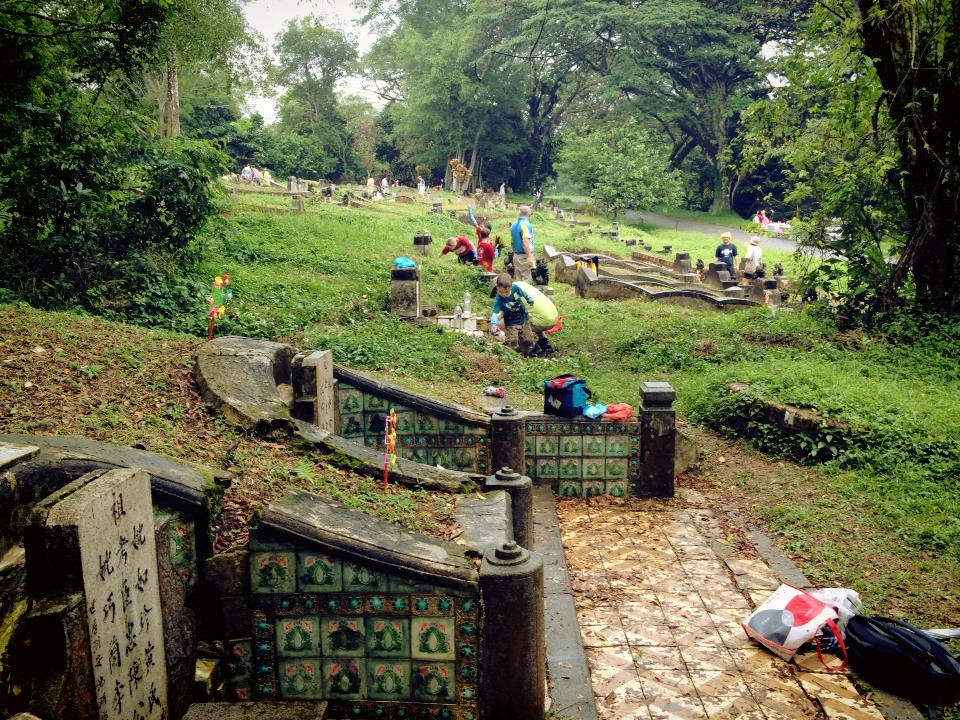
The beautiful tiles of Tan Joo Khoon’s tomb brought to light by the cub scouts. He was the chief clerk at the Master Attendant’s office and acted also as a Chinese interpreter. (photo Raymond Goh)
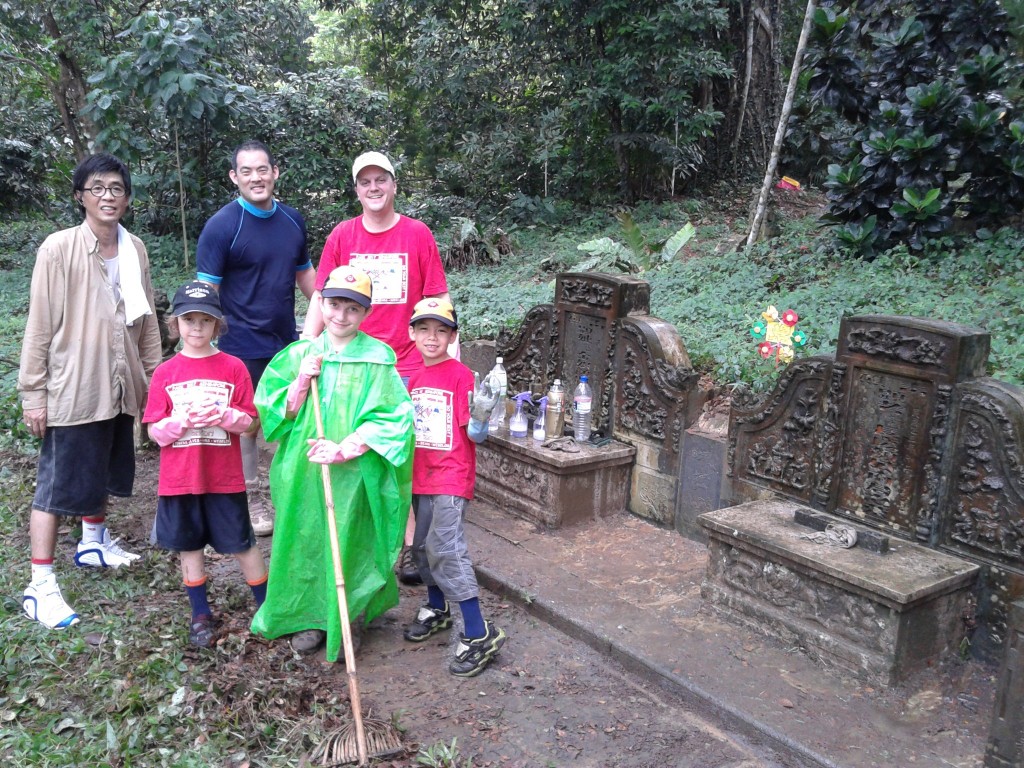
Victor Lim on the left with some of cub scouts. Victor planned the logistics and prepared materials for this project ( photo Ai Loon)
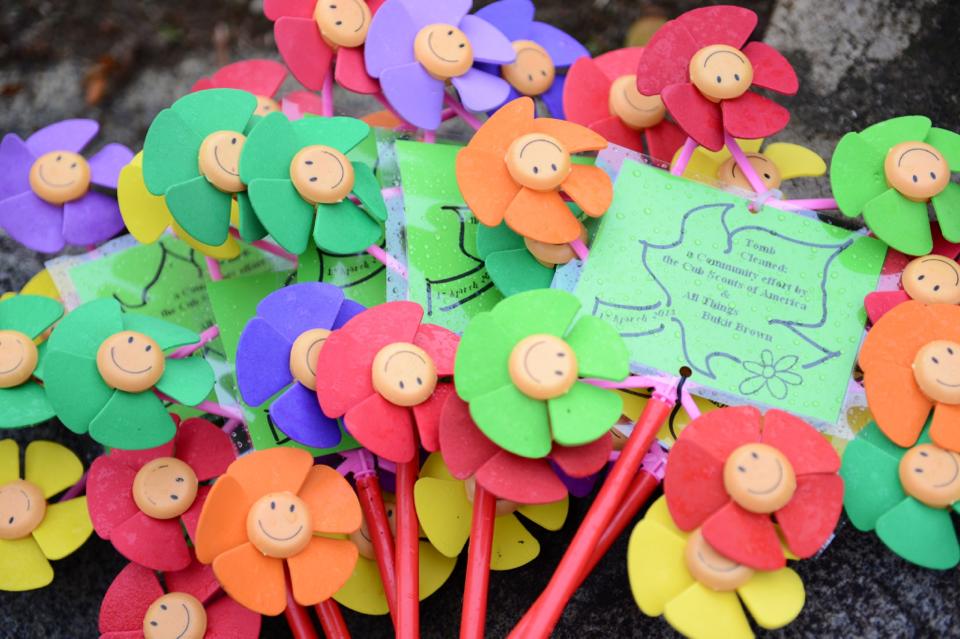
The smiles say “Tombs Cleaned – A Community effort by the Cub Scouts of America & All Things Bukit Brown” (photo Gan Su-Lin)
From left to right: Peter , Yik Han, Danny ,Hang Chong, Zen , , Anna ,Ai Loon, Catherine, Ee Hoon and last but not least Victor Lim who organised logistics and materials needed. Not in photo Sugen and Su-Lin (who was behind the camera).
Here are 4 videos by Khoo Ee Hoon on cubs with parents ar work.
The preparations behind the scene:
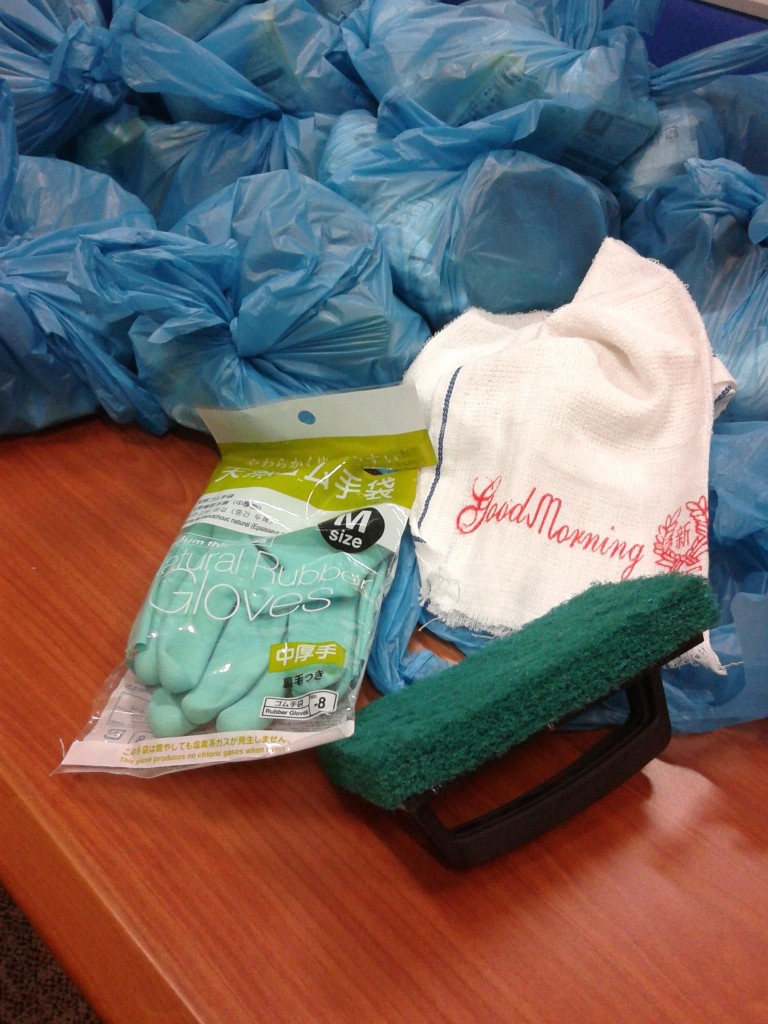
45 cleaning kits, containing gloves, brush and good morning towel. Water Spray bottle and green brooms prepared separately ( photo Ai Loon)
A group of 0ver 60 turned up for the “themed” tour which focused on intricately craved tomb panels and their symbolic meanings. The lead guide Yik Han also gave an introduction to “Tomb Cons” – how tomb contractors go about building the tombs based on the requirements of their “clients”
Some comments from participants on the tour:
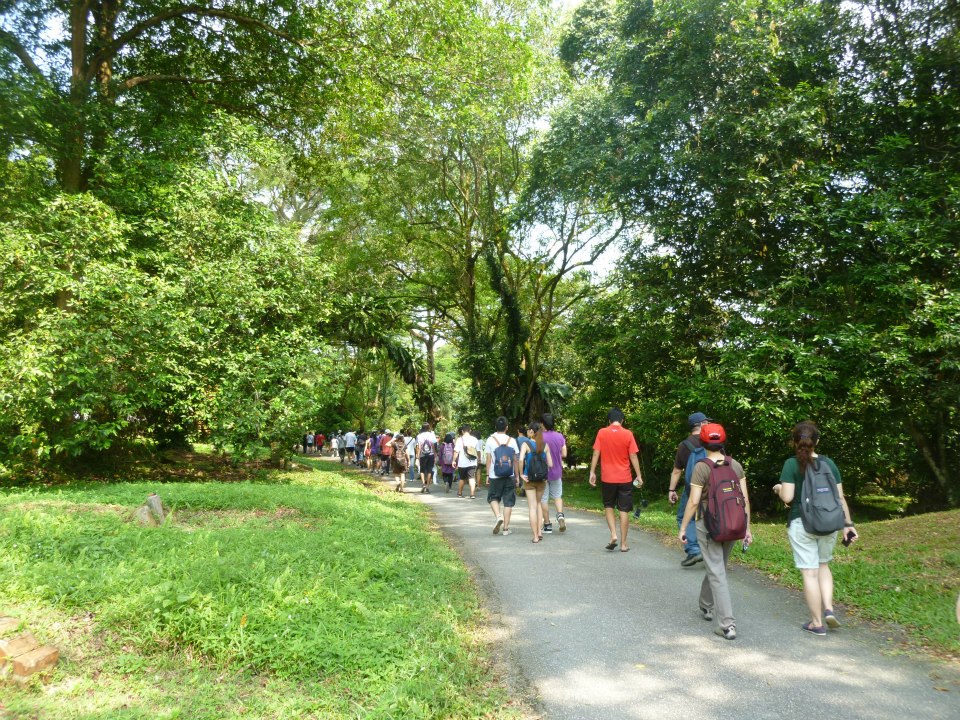
Enjoying nature as the group make their way to the largest tomb in Bukit Brown (photo Cheng Pei Yun)
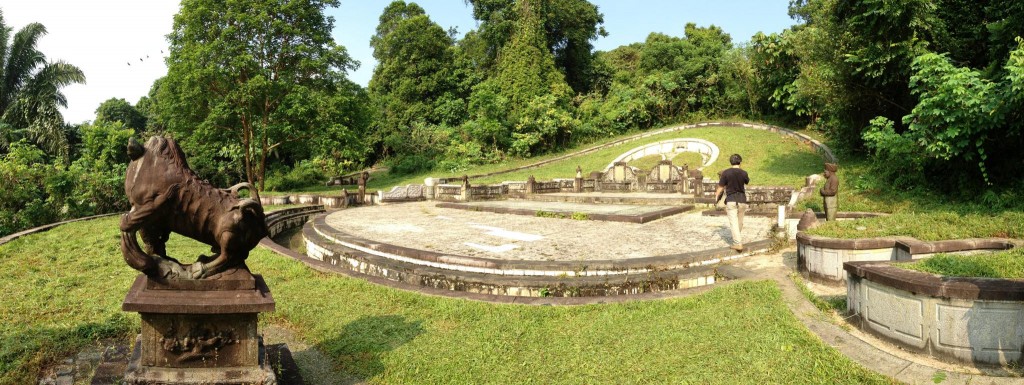
Lead Guide, Yik Han showing the way to the first glimpse of Ong Sam Leong’s spectacular tomb visible from google earth
( photo Kelly Cheng)
For more on the tour, read Cheng Pei Yun’s report
The physical work on the ground that would help take you to the tombs featured on the new iBBC app started today.
A team of volunteers including Brownie Khoo Ee Hoon had prepared sign-ages to be secured at various vantage points. The signs are colour coded to the map so you can traverse the sprawling hills of Bukit Brown, independently.
Ee Hoon who helmed the artwork for this project, outlined a list of things which had to be done
The steps:
1) Design+Buying material (metal pole, cement, boards, laminating film, nuts and bolts)
2) Production of poles and signages which involve
a) cutting pole to length required
b) making cemented base + planting metal pole into cement base and dry
c) Painting the metal pole.
d) Cutting boards for signages and drilling holes for nuts and bolts.
3) The calculation of distant (footnote)
4) The final adjustment to design + print + laminate
5) Stick laminated signages to board,
5) Arrange signages in right sequences
6) Screw board to metal poles
7) Plant the finished poles and signages.
footnote trivia : the distances on the sign board to the tomb, shown in metres were calculated by footsteps. On average. one footstep is equivalent to one metre. So walking 150 metres to a tomb is approximately 150 steps depending on how long is your stride 😉
The iBBC App Guide is a FREE App to accompany you when you visit Bukit Brown Chinese Cemetery. It has been developed by the The Bukit Brown Cemetery Documentation Project led Dr Hui Yew Foong. Brownie Khoo Ee Hoon designed the artwork of the map. There will be physical markers on site to guide the way.
Download your App from the Google Android store now, here
Check out a video demo on how it works here
And once you have downloaded you can test the application here before heading to Bukit Brown!
Note: This is a sample of a few tombs. The the App itself has data of over 20 tombs introducing you to the pioneers buried there.
Those with accompanying numbers e.g. Tok Cheng Tuan 1948 are staked and and will be exhumed. to make way for the eight lane highway. You only have a few months left before you can catch this tomb in all its magnificent glory.
The Wayang in the Tombs
by Ang Yik Han
(Popular tales performed in Chinese Wayang carved in iconic scenes on tomb panels.)
In the ” Romance of the Three Kingdoms” General Guan Yu is immortalised as the epitome of loyalty and righteousness. He played a significant role in the establishment of the state of Shu Han during the period of the Three Kingdoms.
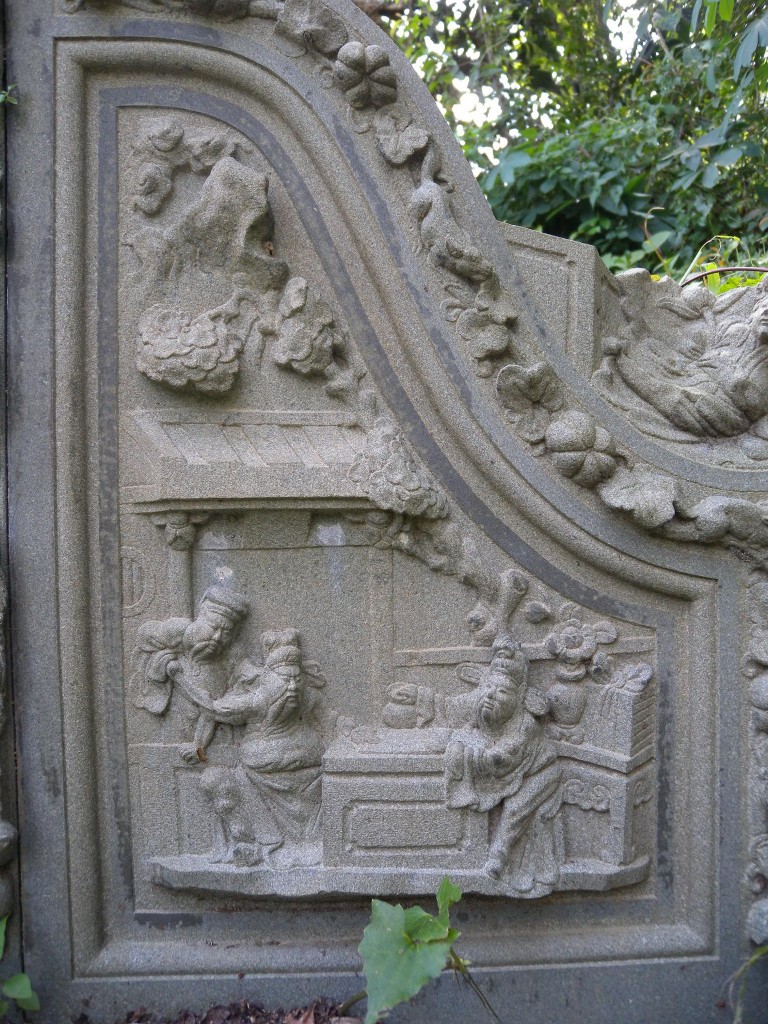
Guan Yu took a poisoned arrow in his right arm when he was besieging the city of Fanzheng. Determined not to retreat, he called upon the services of the famed physician Hua Tuo to treat him on the battlefield. Hua Tuo saw that the poison had spread to Guan Yu’s bones and he had to operate on his arm and cleanse the poison by scrapping his bones. Undeterred, Guan Yu subjected himself to the ordeal, all the while sipping his wine and playing a game of chess. ( photo by Yik Han)
Legend? Embroidered truth? It does not matter, over the ages from at least the Ming Dynasty, the image of Guan Yu smiling and sipping his wine while Hua Tuo scrapped his arm bone has been a source of wonder and encouragement for many.
This tomb is located in Hill 2 and belongs to the Teo Family.
More tombs featuring Guan Yu, here
From Madam White Snake :
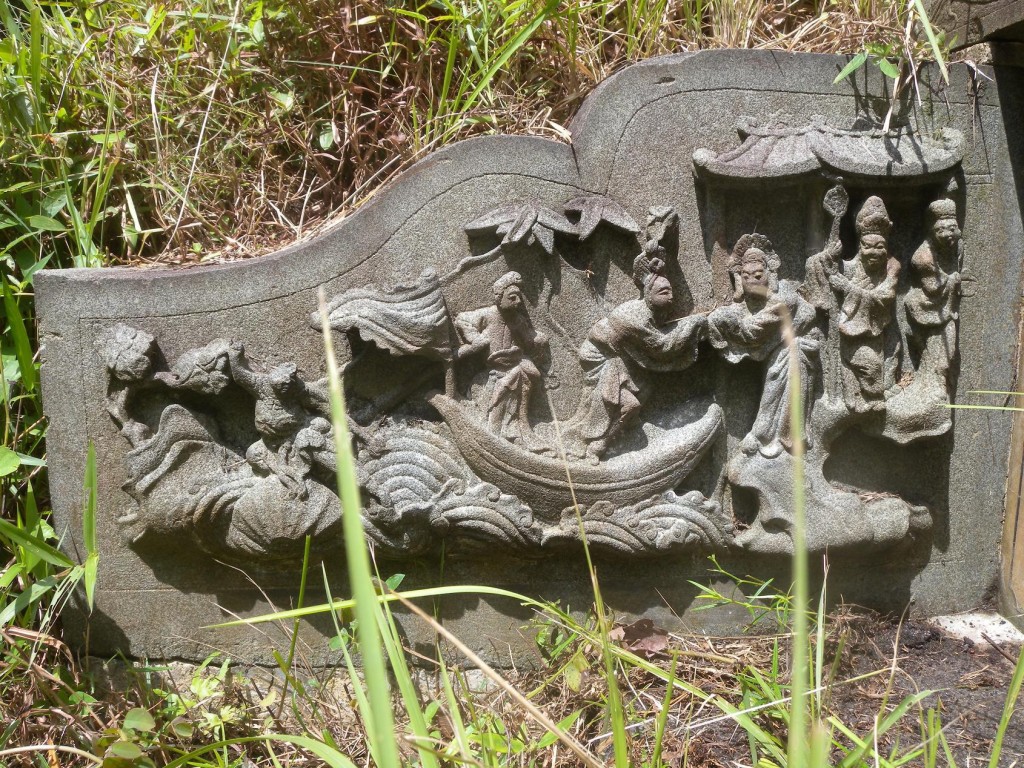
A panel possibly of the White Snake parting with her husband after he was taken in by the words of the monk Fa Hai. (photo Yik Han)

The White Snake and her companion the Green Snake (the two ladies in the boat) leading the creatures of the sea in an attempt to flood Jinshan Temple and rescue her husband Xu Xian (许宣) from the clutches of the monk Fa Hai (法海). (photo by Yik Han)
From Nezha conquers the Dragon King :
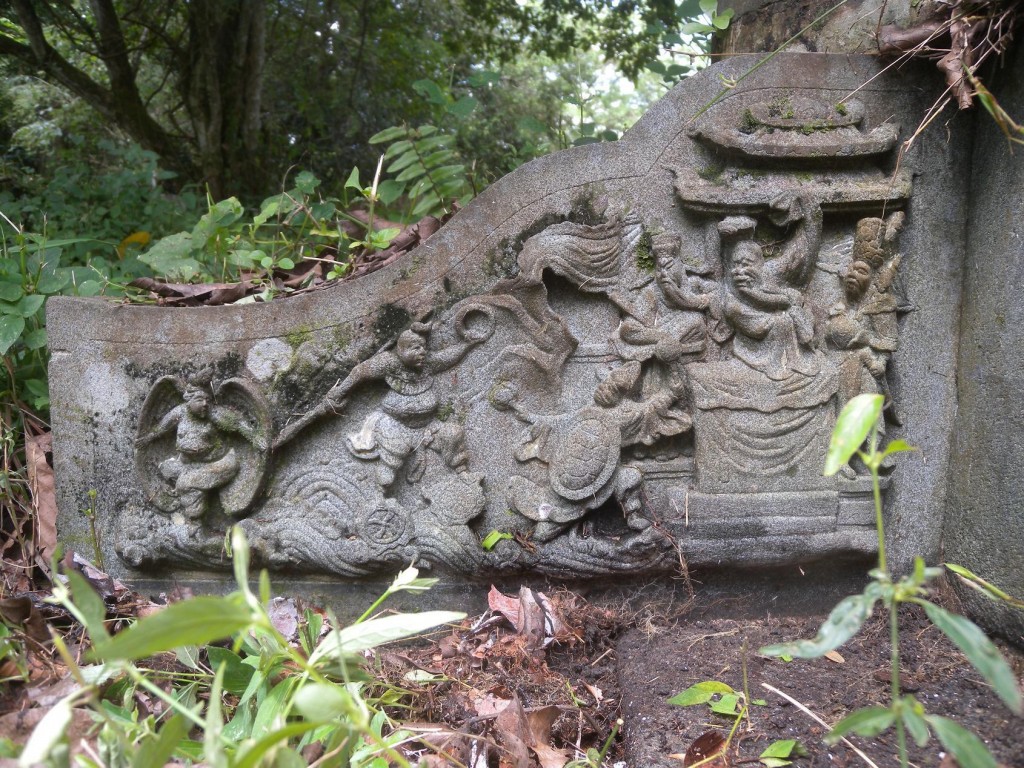
Nezha storming the palace of the Dragon King with his signature Qiankun ring in one hand, his spear in the other and riding on his “fire wind wheels”. The Dragon King flanked by his courtiers are seated on his throne on the right, a bumbling turtle is trying to resist Nezha, and on the left is a shellfish nymph. (photo Yik Han)
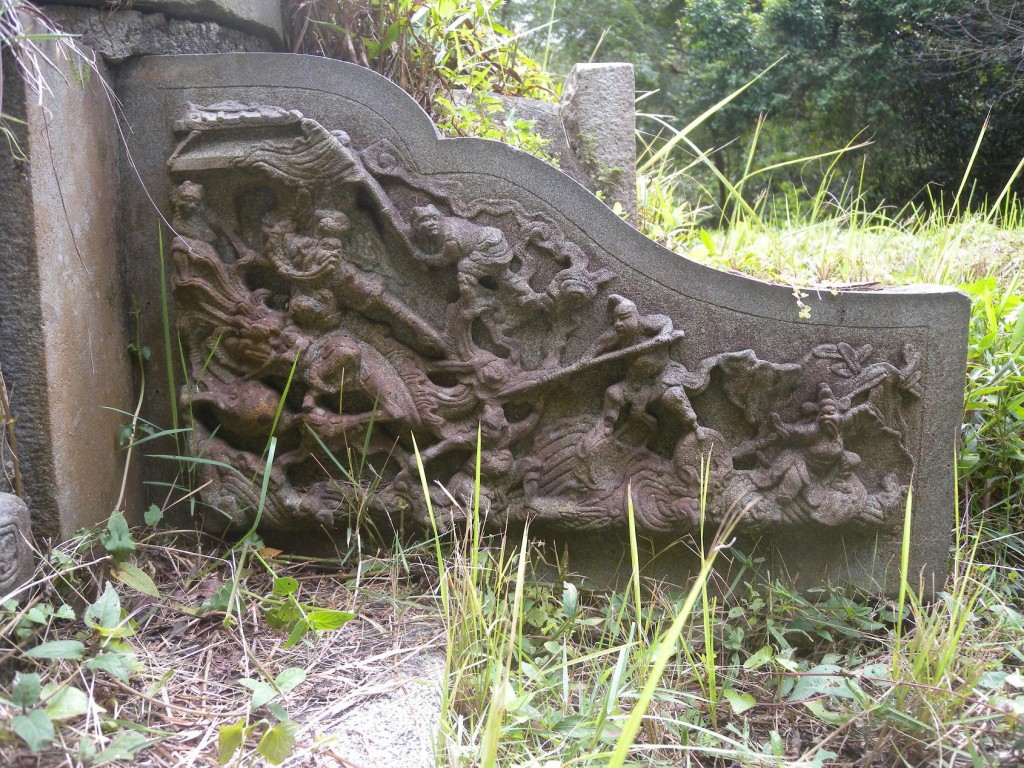
Nezha storming the Dragon King’s domain as the Dragon King riding on a magnificent dragon beats a hasty retreat covered by his underlings. The armed figure on the right may be Nezha’s father Li Jing (李靖), furious with the havoc created by his son (Photo Yik Han)
The panels can be seen at the tombs of Poh Cheng Tee and his wife, and mother, in Hill 1, stake numbers 1017 – 1019. Exhumation of staked tombs in the way of the 8 lane highway is expected to begin after April 15th
by Grace Seah
“History, despite its wrenching pain, cannot be unlived, but if faced with courage, need not be lived again.”
Maya Angelou
In memory of my Uncle Tan Kim Cheng
One might wonder what has WWII & Operation Sook Ching has to do with Bukit Brown as a place in our history.
Among the men, women and children buried at Bukit Brown were victims, killed by the Japanese during the war. Many lived through that tumultuous period in Singapore’s history and carried with them the pain and heartache of not knowing where their son or daughter went during the war, never to be seen again.
This is a story of one such family – my family.
In an earlier blogpost about my grandparents, I shared a much loved family photo which included my grandparents, my father and his 2 elder brothers. One of his brothers was taken by the Japanese that one fateful day in Operation Sook Ching and my grandparents never saw their third son ever again.
Just what was Operation Sook Ching ?
According to the heritagetrails.sg website
“A decree was issued on Wednesday 18 February 1942: All Chinese males between the ages of 18 and 50 in Syonan-To (as Singapore was called during the Japanese Occupation) were to report to the various registration centres around the island. The decree embodied Japanese hatred for the Chinese, cultivated through years of Sino-Japanese war since 1937. Also, overseas Chinese had been quickly labelled anti-Japanese due to their contributions to war efforts in China. Thus began the Sook Ching operation, or the elimination of anti-Japanese elements.”
A story that is often told in our family revolved around the time my father, Tan Kim Huat – youngest son of Tan Keng Kiat and Chan Gim Neo, – was rounded up by the Japanese, together with his third brother Tan Kim Cheng. Both were taken to a holding area with many other young Chinese males in the vicinity. They were not told of the reason for their detention, but they were all held like prisoners surrounded by fiercely guarded fences and barriers.
Many like my father experienced the sheer terror of not knowing what to expect from their captors that drove them to despair and desperation. Many never lived to tell their story. My father did.
On the night of their capture, my father had a premonition that all of them were going to be killed the next morning. He heard his inner voice telling him to run for his life and resolved to find a way out no matter what. At 22 years of age, my father possessed the courage and brashness of youth which stood him in good stead in this instance.
He sought out his elder brother and told him of his plan to escape. My uncle being of a different nature just could not find it in him to make that dangerous journey. My dad, not being able to convince his brother to follow suit, then decided to make a run for it in the middle of the night.
Whatever possessed my father to take that perilous journey, to this day, he cannot say. But with his every being pumped up with adrenalin, he did the unthinkable and scaled a secured fence and ran away to freedom, all the time expecting a bullet to his back.
Imagine my grandparents’ elation and at the same time heartache when my dad ran home that day but without his brother. The next morning, my aunts went to the place of detention to look for my uncle but never found him again. He was presumed dead, and I believe, his name is engraved amongst those of the many civilian war victims at the Civilian War Memorial near the Padang.
As for the young women, my mama (grandma) had to urgently find a couple of single men willing to take my unmarried aunties as wives at short notice so as to protect them from the Japanese. My aunts were married off to non Peranakans from humble backgrounds. Both my uncles ended up being good men who looked after my aunts and the children that followed as best as they could.
If my aunts had not been hurriedly married , they would most certainly have been taken by the Japanese to be comfort women. If my father had not been so brave, I would not be here today.
We must therefore never forget the courage and spirit of the people of Singapore during the early years. Their blood flows through us, because of them, we are here.
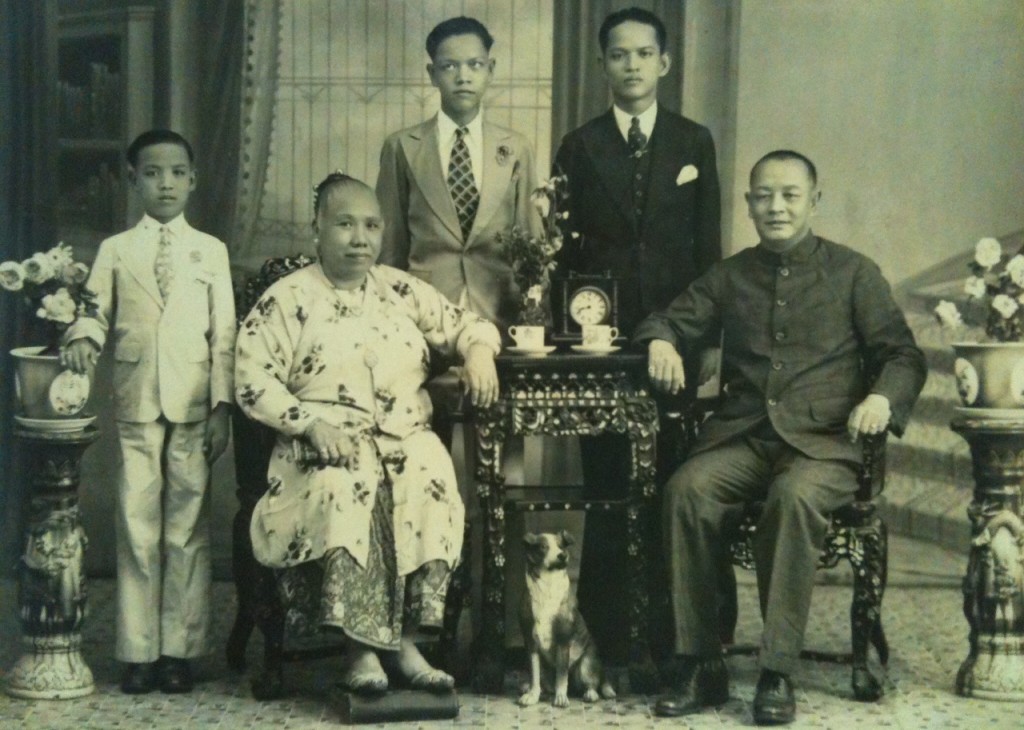
My father on the extreme left beside his mother (my grandma) and next to her my Uncle Tan Kim Cheng who was lost to Sook Ching ( Family Album )
Four Appointments (四聘)
by Ang Yik Han
Yet another set of four popular stories from Chinese history, this time found at the double tomb of Chew Joo Chiat and his wife, the subjects of the “Four Appointments” are two great rulers and two renowned officials who assisted their masters ably in establishing their kingdoms.
1 Yao Appoints Shun (尧聘舜)
Yao (尧), a great ruler of the Xia Dynasty (夏朝) the origins of which have been lost in time, was troubled. His son was not fit to assume the mantle of leadership and the whole land knows it. He had no choice but to hand over to someone from outside the family but a suitable candidate had to be sought. Word came to his ear of a filial young man, Shun (舜), a commoner who had lost his mother at a young age. His father’s already bad temper became worse after this and after he remarried, his affection turned from him to his new son. Shun’s stepmother and his stepbrother also treated him badly. Despite this, he was steadfast in his obedience to his parents. His filial piety was such that one day, the celestial courts sent an elephant to help him till the soil and birds to weed his fields. Yao judged that Shun was the best candidate for the position after he met him and even married his two daughters to him. Shun did not fail to disappoint and became another great ruler. The motif of the elephant in Chinese art has since been associated with peace and prosperity in the land on this account.
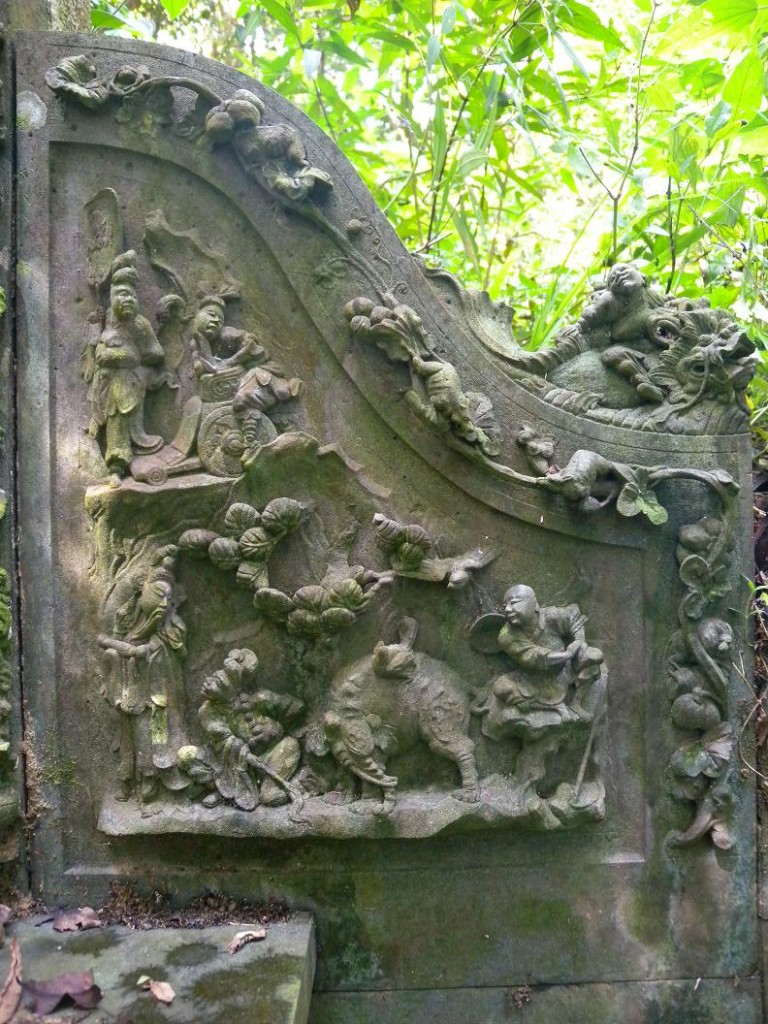
Shun sits by his fields as the elephant and what looks like a well-fed bird helps him out with his farming. Yao approaches from the left. (photo Yik Han)
2 Shun Appoints Yu (舜聘禹)
During Shun’s (舜) reign, floods were a constant scourge for the people. He appointed Gun, father of Yu (禹) to tackle this problem. Gun’s efforts were ultimately unsuccessful and Yu was appointed in his place. Unlike his father who tried to stem the flood waters with dams and embankments and failed, Yu created tributaries to disperse the waters. He was so dedicated to his work that he was supposed to have traveled around the land continuously for ten years. Even though he passed by his house 3 times, he did not stop to visit his family and missed his child’s birth and growing years. When he eventually succeeded in taming the waters, his knowledge of the lay of the land was unsurpassed. Coupled with his well-known concern for the people’s welfare, none was thought more eligible to take over as Shun as ruler. Till today, he is known as the “Great Yu” (大禹) in remembrance of his deeds.
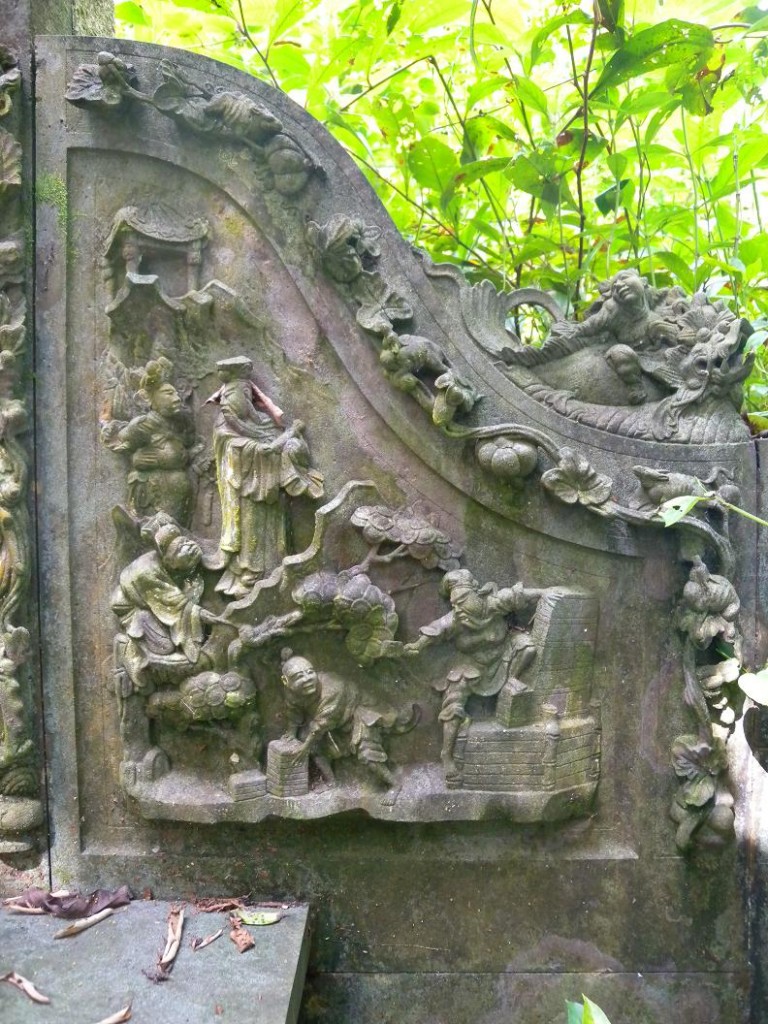
Yu building a brick wall in preparation to channel the flood waters as Shun arrives on the scene. (photo Yik Han)
3 Shang (Cheng) Tang Appoints Yi Yin (商汤聘伊尹)
The last ruler of the Xia Dynasty (夏朝) was a tyrant notorious for his wanton cruelty and excesses. He paid no heed to governmental matters, which was to be his undoing. One of his vassals, Cheng Tang (成汤) saw the opportunity to advance himself, quietly built up his strength and bringing men of talent into his fold. Hearing about Yi Yin (伊尹), he visited and met him with his buffalo. Yi Yin rebuffed his invitation however, stating that he had no wish to become an official and that he had no abilities to speak of. Cheng Tang had no choice but to leave. Soon after, however, Yi Yin was brought to his attention again, such was his reputation. It was only on Cheng Tang’s third visit that he succeed in convincing Yi Yin to cast his lot with him. With his help, Cheng Tang overthrew the Xia and became the first king of the Shang Dynasty (商朝). As for Yi Yin, he is remembered as a great politician, strategist, philosopher as well as a good cook; he was adopted as one of the patron deities of cooks in China.

Yi Yin pulling his buffalo behind him as Cheng Tang respectfully makes clear his intention in meeting him. (photo Yik Han)
4 King Wen Appoints Tai Gong (文王聘太公)
During the Shang Dynasty (商朝), the Duke of the West, Ji Chang (姬昌), traveled around his realm to seek men of talent who could help him administer his domain. One day, on the banks of the River Wei, he saw an old man who was fishing with no bait, using only a bare fish hook which was straight instead of curved. When asked why he did this, the old man replied that those who were willing would be hooked voluntarily. Realising he had met an exceptional person, the Duke invited the old man into his carriage and personally pulled him along for eight hundred steps. The old man, Jiang Ziya (姜子牙), was to become the Duke’s trusted advisor and his kingdom’s chancellor, helping his son overthrow the tyrannical rule of the Shang Dynasty and establish the Zhou Dynasty (周朝). Ji Chang was given the posthumous title of King Wen (文王) after his son’s success and his able advisor was appointed as the Grand Duke (太公). This story forms part of the “Investiture of Deities” (封神演义), a fictionalised account of the Zhou’s triumph over the Shang replete with supernatural elements which has been part of popular literature and performance arts for centuries.

The Duke of the West on his way to visit the old man who waits for fish which cast themselves willingly on his hook. (photo Yik Han)
A common thread runs through the four stories: in their search for men of ability and virtue to help administer the country, rulers have to humble themselves and seek far and wide. The stories are a reminder of the respect that society is supposed to accord to the ones who have both the talent and heart to assume the mantle of government.
Antique Display Shelf (博古架)
by Ang Yik Han
The term “bo gu” (博古) is derived from an inventory of antiques stored in the Xuanhe Palace commissioned by the Song Emperor Huizong. The published compilation consisting of 30 volumes was titled “bo gu tu”( 博古图) or diagrams of antiques. Subsequently, the shelves used in the Song palaces to display choice antiques came to be known as “bo gu” shelves. Over time, such shelves became popular outside of the royal court and appeared in the homes of the landed gentry, where they were used in studies and other private spaces to display antiques, curios and art pieces. Ranging in size from cabinets to small tabletop display racks, they still provide an Oriental touch for many homes today.
In Chinese art, antique display shelves containing various items with auspicious or felicitious connotations often appear as decorative motifs. However, few have been observed as tomb decorations at Bukit Brown. A rare pair can be seen at Ong Sam Leong’s tomb on the carved panels adjoining the Earth Deity’s altar.
The following objects can be seen on the panel on the left (from right to left)
- a vase with peony flowers – peace and prosperity.
- a tripod fruit platter containing a peach, a pumpkin and a citron – the fruits symbolise longevity, fertility (especially male offspring) and happiness. Collectively, they are known as the “3 Abundances”.
- what seems to be a Western clock – this may be an admonition to descendants to be mindful of time which waits for no man.
Those on the right panel are (from left to right)
- a censer with threading incense smoke above – fertility and generations which go on and on
- a container with a staff from which hangs a chime (bell) in the an “ao yu” or dragon fish – the character for chime in Mandarin is phonetically similar to “wishing” and the “ao yu” finds common use in an idiom which means “to be the best” (独占鳌头), so this could be an expression of wishing (descendants) to take the lead in all their endeavours
- a container with what seems to be a pair of forceps used with incense
- what looks like a branch from a plum tree – the plum blossom is admired for its resilience so this could be the implied meaning here
This is another example of the fine tomb sculpture which adds to the elegance of the tombs of Bukit Brown.
Editor’s Footnote : The same features were discovered on a tomb in the deep undergrowth of Lau Sua by Brownies exploring the area. Clothed in moss, the features are still discernible and the tomb itself is pretty grand!
Seah Eu Chin (1805-1883)
Singapore’s Pioneer Gambier and Pepper Plantation King
Founder of Ngee Ann Kongsi
It started with a breaking news flash on the Heritage Singapore Bukit Brown Cemetery Facebook page posted by Raymond Goh just after 2 pm on Friday 16 November 2012:
“Breaking news….the Goh Brothers have found the triple tomb of one of foremost Teochew pioneers of Singapore – Seah Eu Chin and his two wives, sisters of Tan Seng Poh. Details to follow…”
This was followed by the first photo of the tomb described as :
“Tomb of Seah Eu Chin, founder of Ngee Ann Kongsi, with his two wives Tan Beng Guat and Tan Beng Choo. Eu Chin passed away in 1883. We will take exact measurements tomorrow, but his tomb is believed to be as big as Ong Sam Leong.
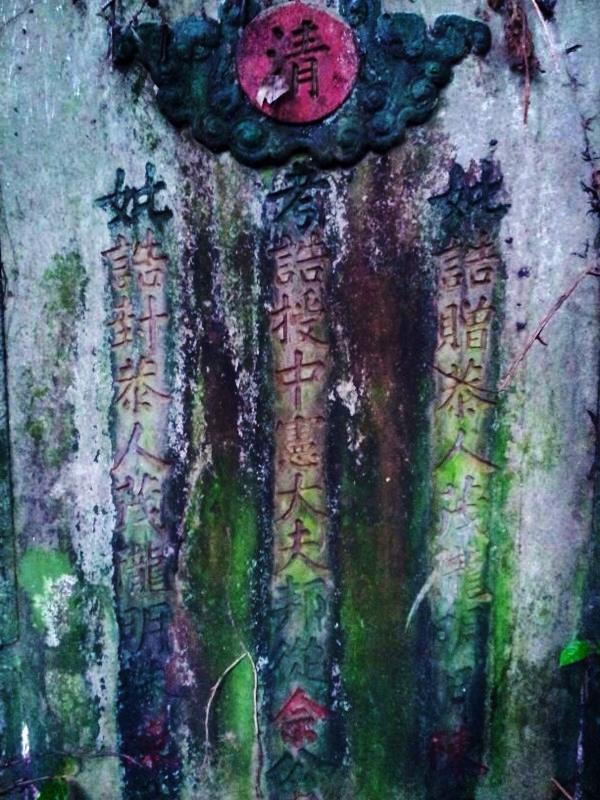
Tomb of Seah Eu Chin, founder of Ngee Ann Kongsi, with his two wives Tan Beng Guat and Tan Beng Choo. (photo Raymond Goh)
The tomb inscriptions included imperial titles, but Raymond reports, reading the inscriptions is proving a challenge as some of characters are missing. The lettering is done with some kind of metal which has fallen off.
This is Charles’ account of the search for Seah Eu Chin
“Like the previous finds of Ann Siang and the elder Gan, minutes before the find, there will be rain. For Seah, there were additional ‘help’. On the 1st day, a cobra reared its head preventing us from going one way. Another hissed to stop our tracks when we tried another way. And we met a monitor lizard on the start of the 3rd route. Thinking something’s wrong, we stopped our search minutes after we started. (After Eu Chin’s find, we knew we had went the wrong side of the hill then.) The 2nd day we tried a new location. The trek was smooth, and when rain fell, a sense of hope, and there rose a feeling that something was right. We found it in 10 minutes.”
The next morning, the Goh brothers were back at the grave and posted a photo of the grave in full glory:
The brothers have cleared a path towards the grave so his descendants, members of the Teochew Community and Brownies can visit later. The location of the grave is under wraps at the moment until such time as the descendant who made the request for help to find Seah Eu Chin is informed.
An extract on Seah Eu Chin from The Straits Times, 24 Sept 1932, Page 12
Chinese Benefactor of 1845 – Ngee Ann Kongsi:
In or about the year 1845 the late Seah Eu Chin, at that time a prominent Teochew merchant in Singapore and 12 other Teochew merchants then in Singapore, promoted the formation of a fund for the propagation and observance in Singapore of the doctrines, ceremonies, rites and customs of the chinese religions as observed by the Teochew community, a community of Chinese originating from certain districts in the Kwantung Province of China, and for other charitable purposes for the benefit of the members for the time being in Singapore of the Teochew community…
There is a blog post on Seah Eu Chin here.
Related Post:


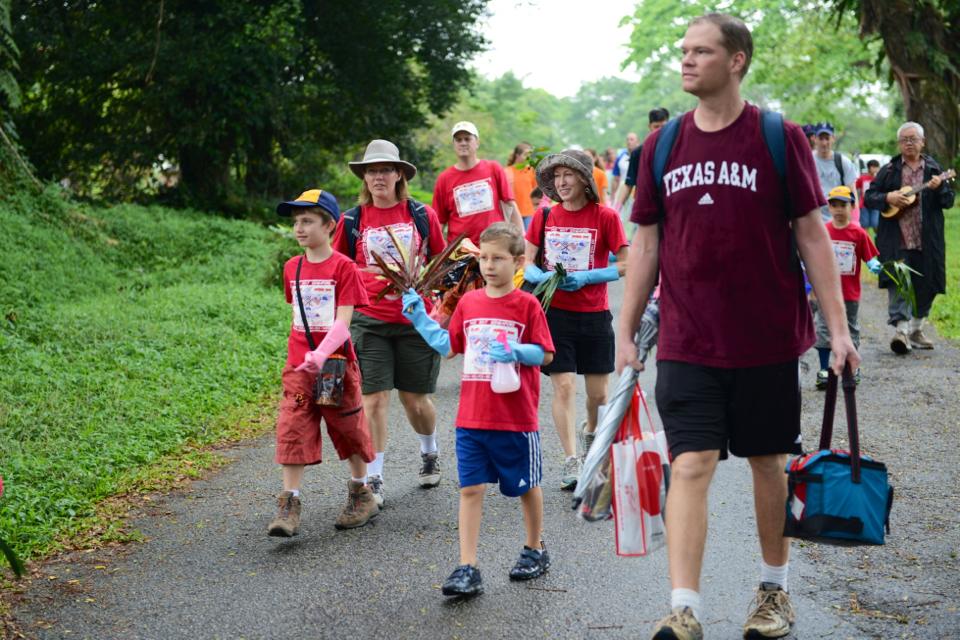
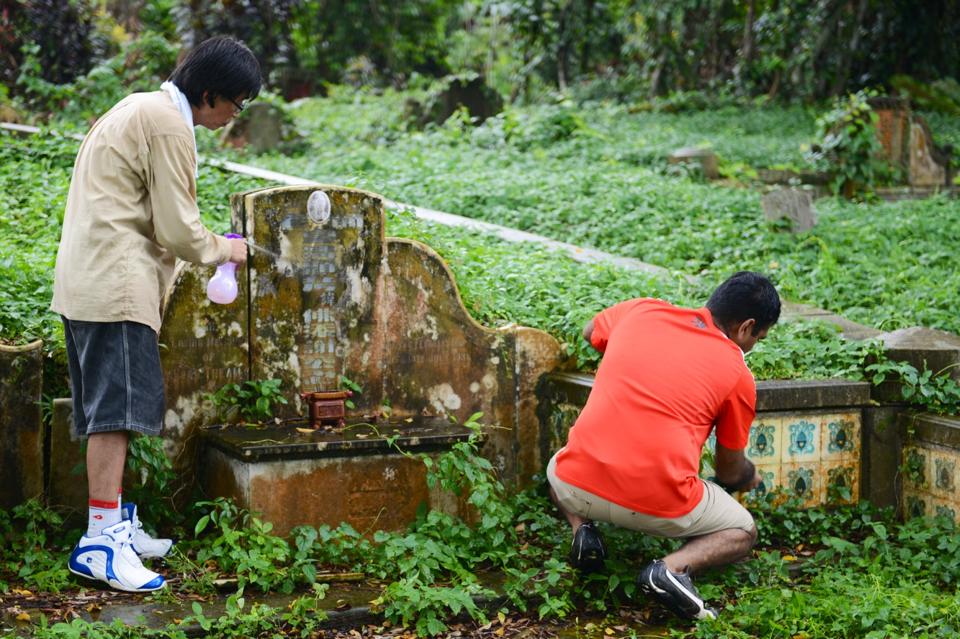

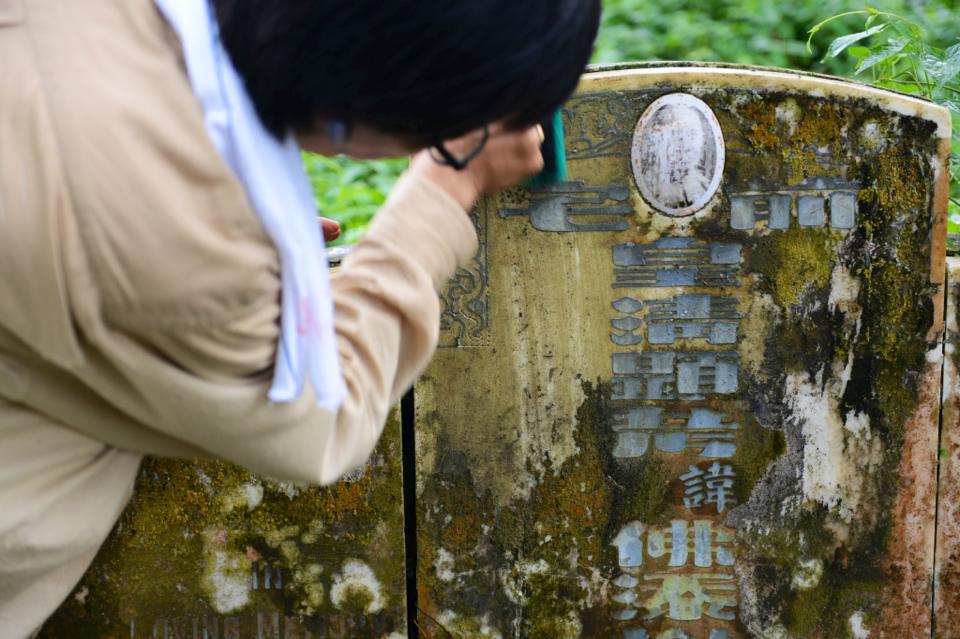
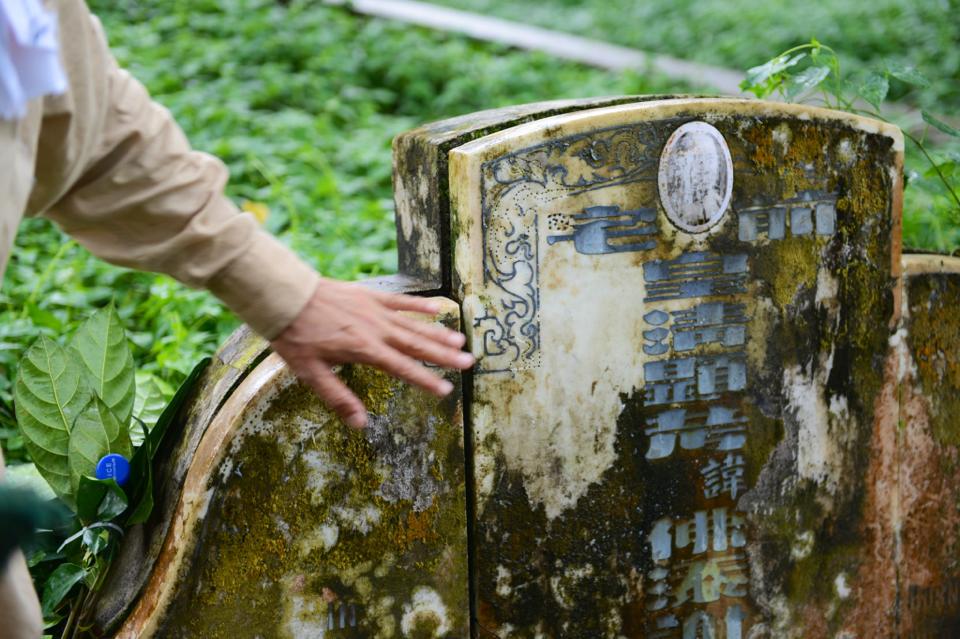
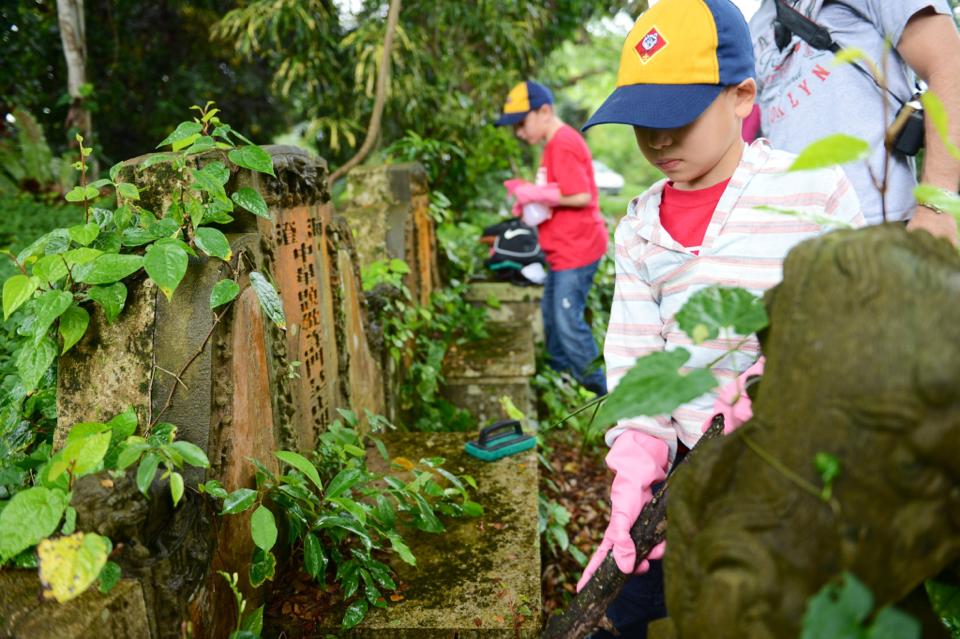
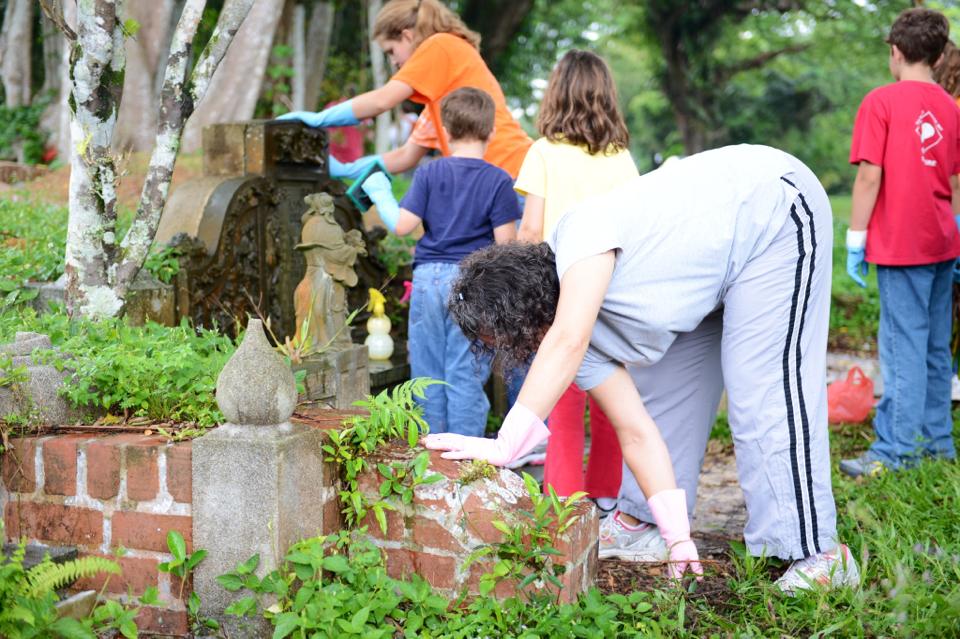
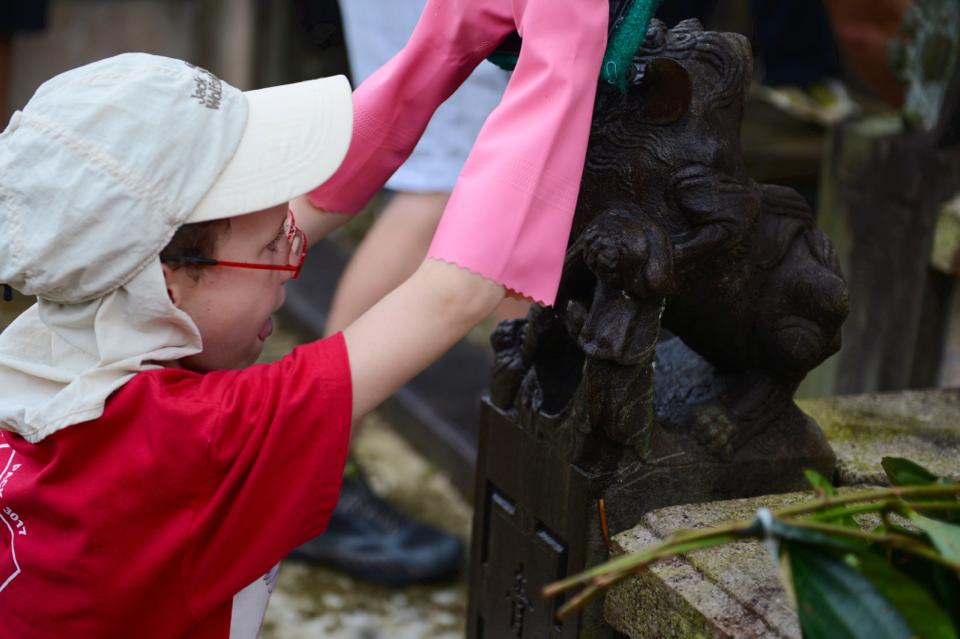
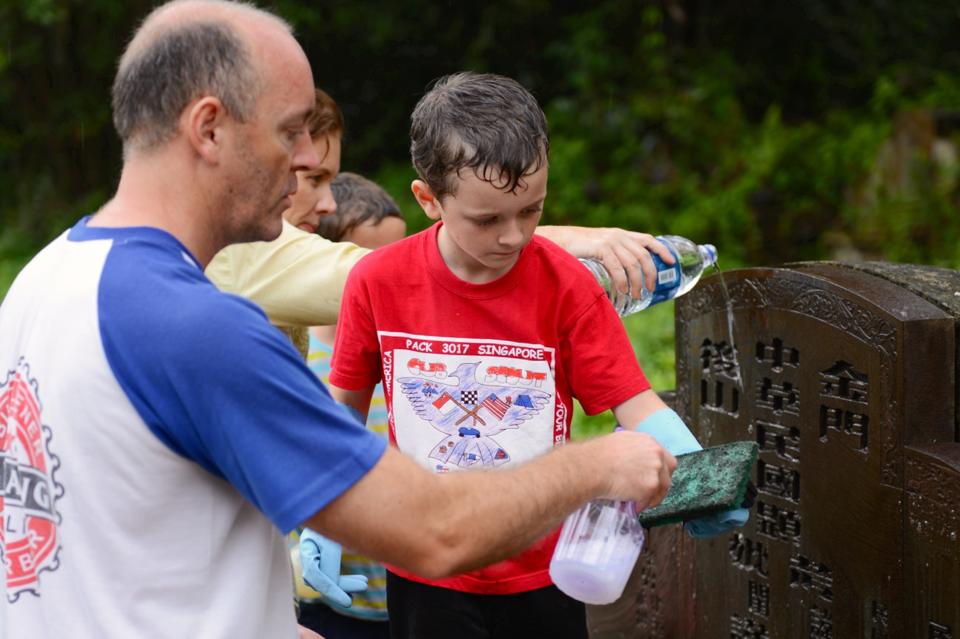
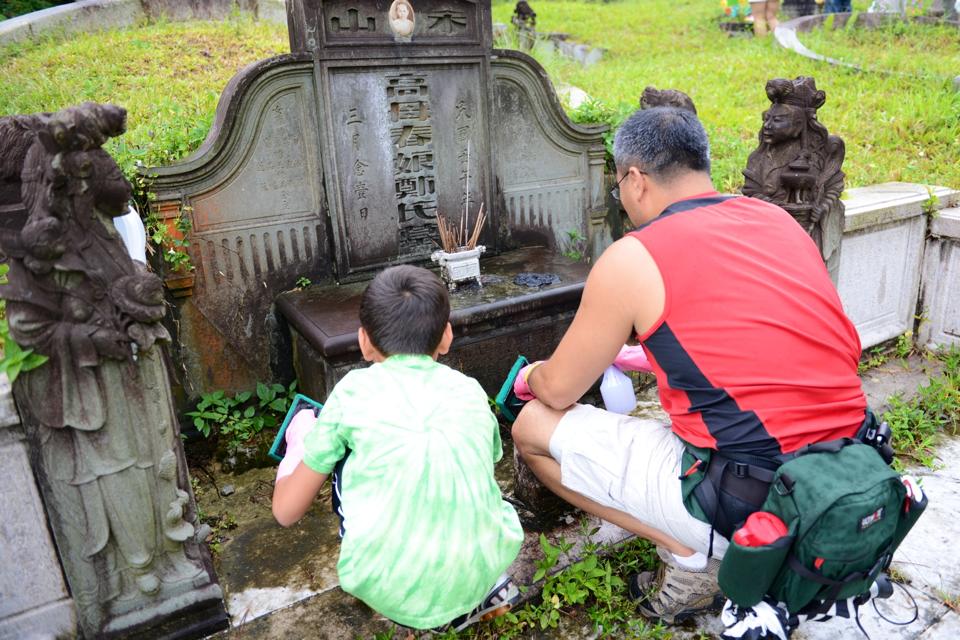



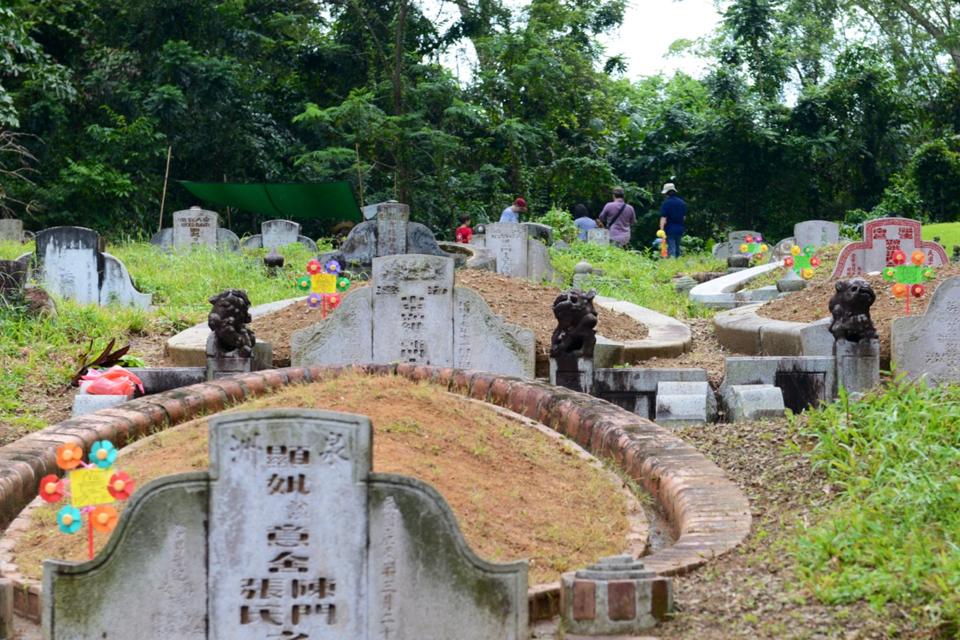
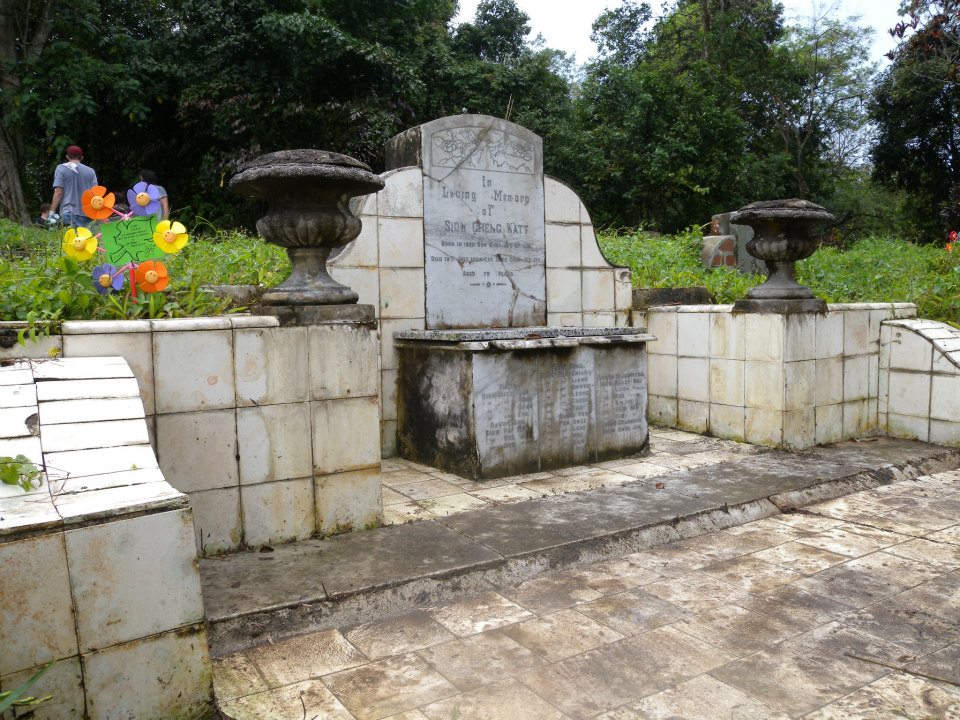
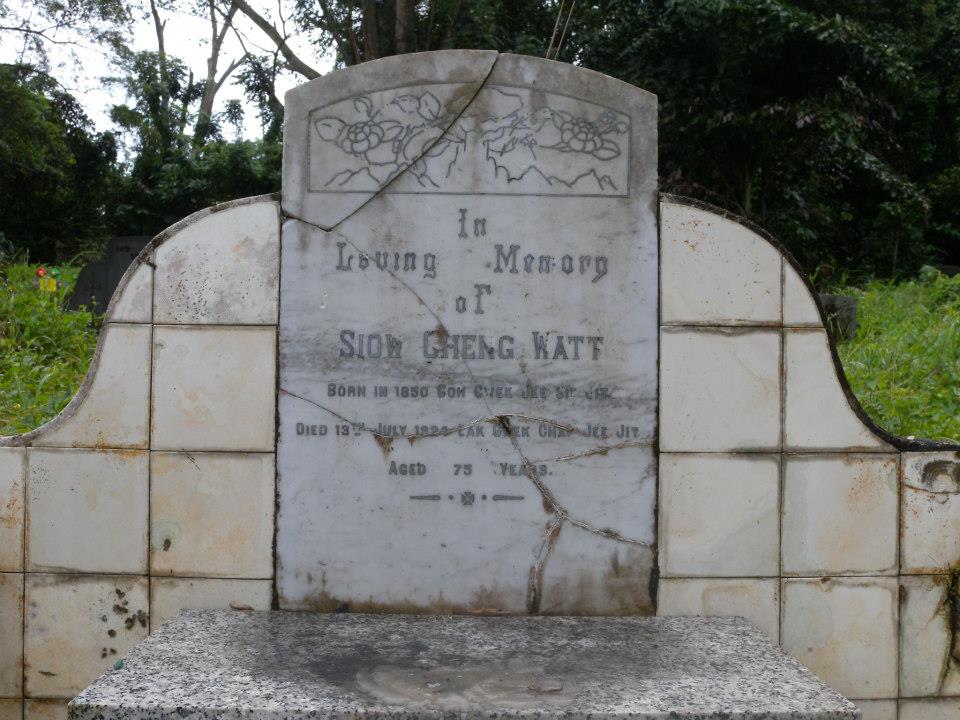
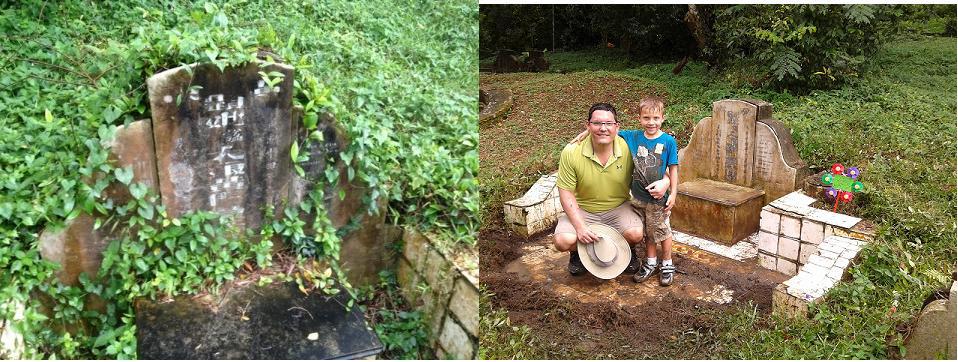
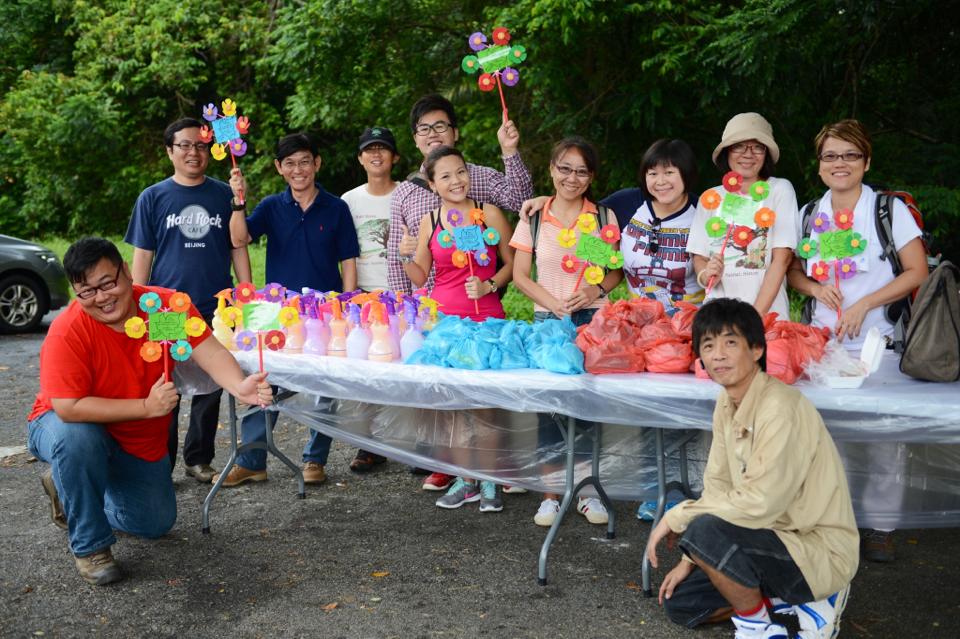
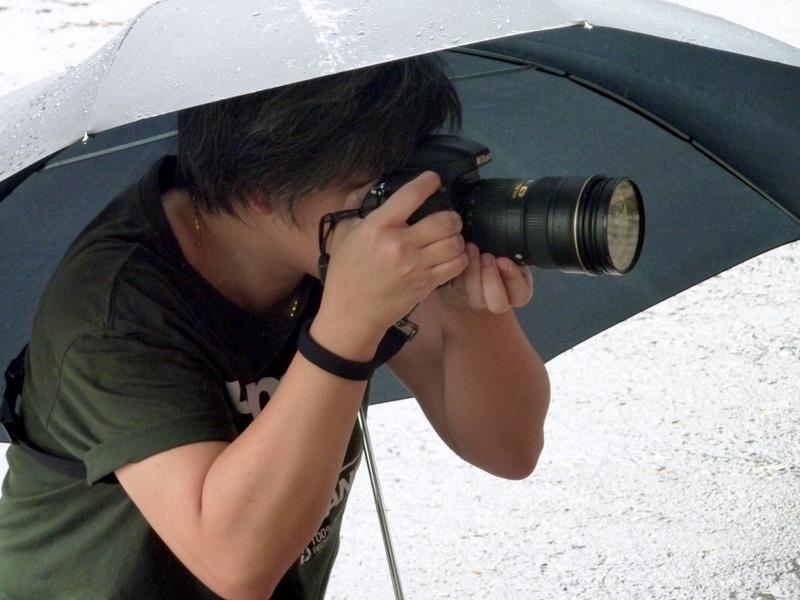
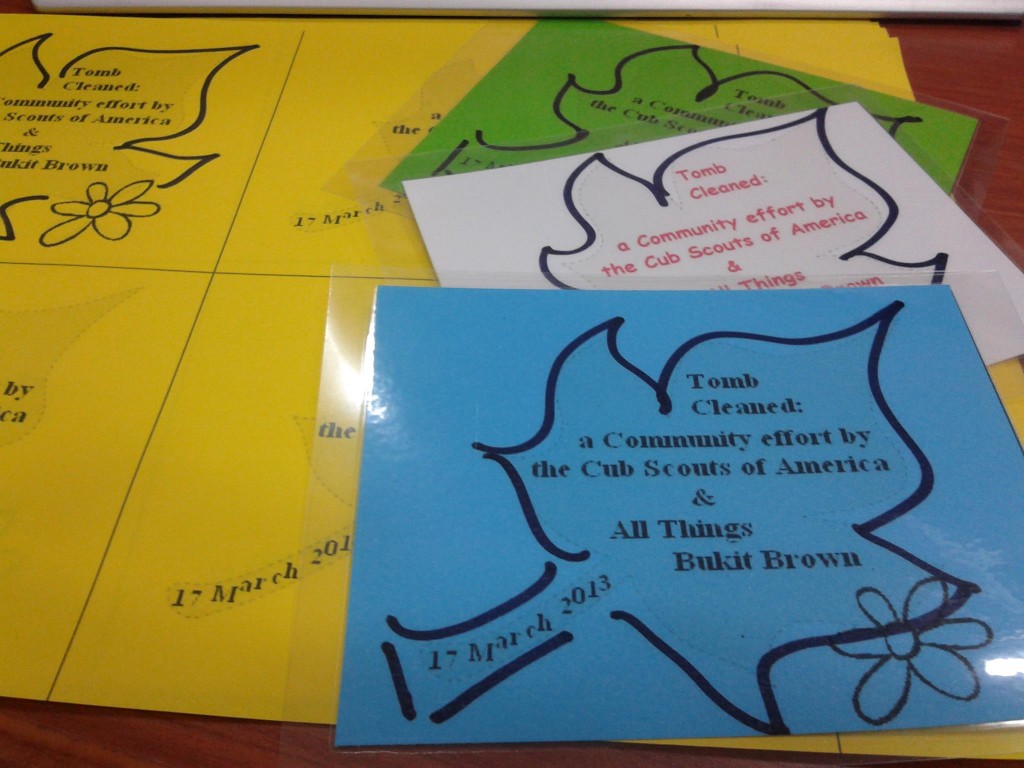
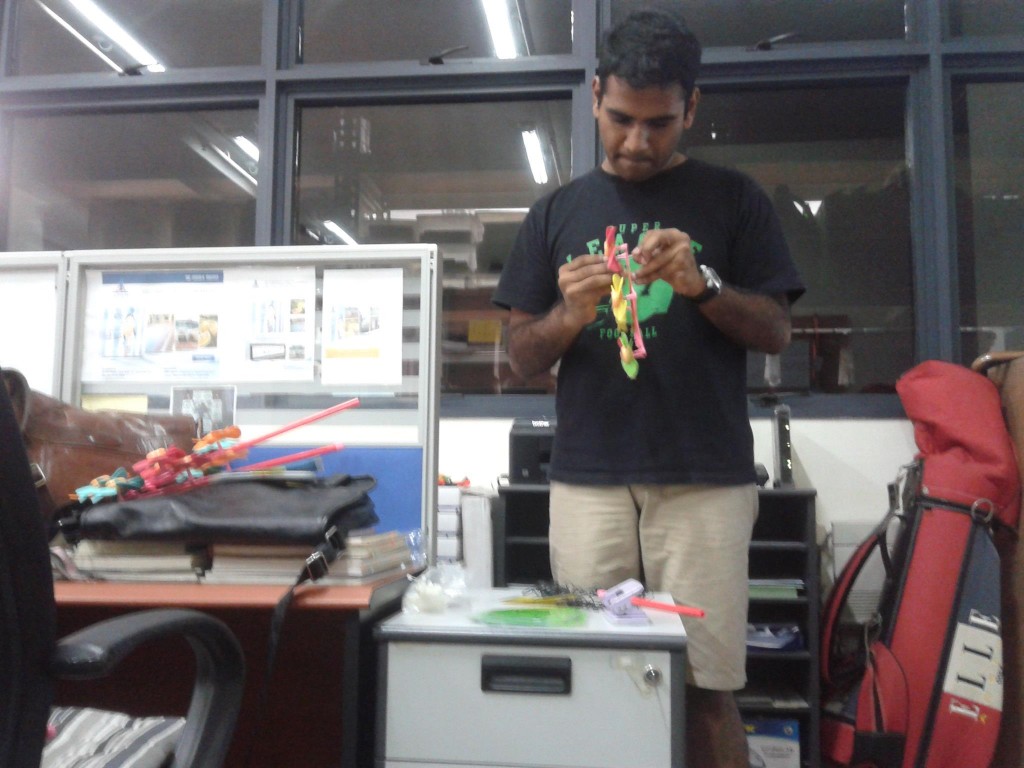



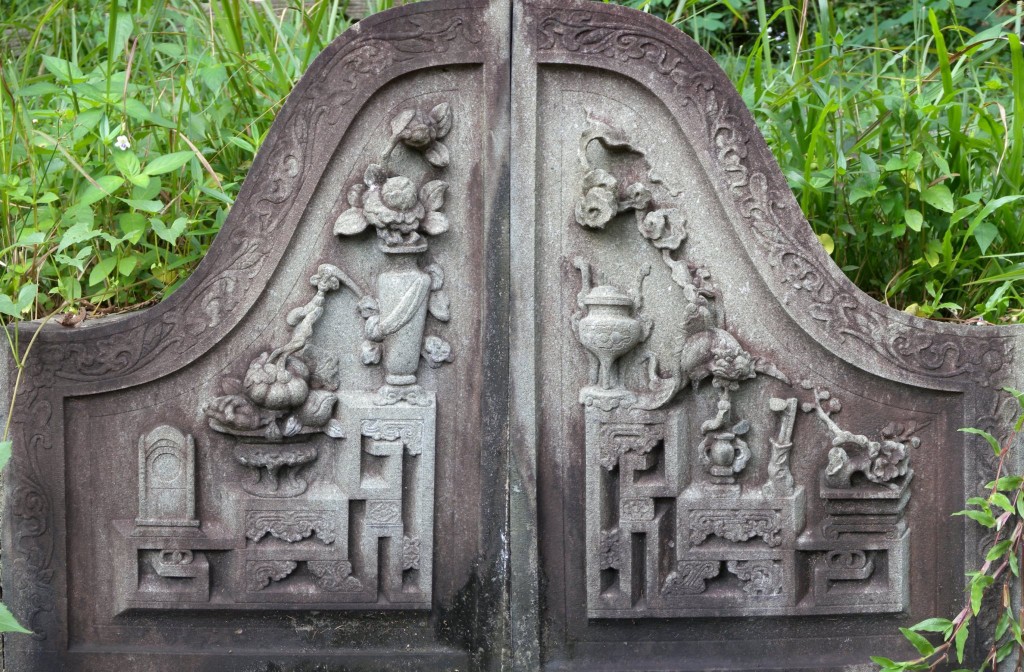
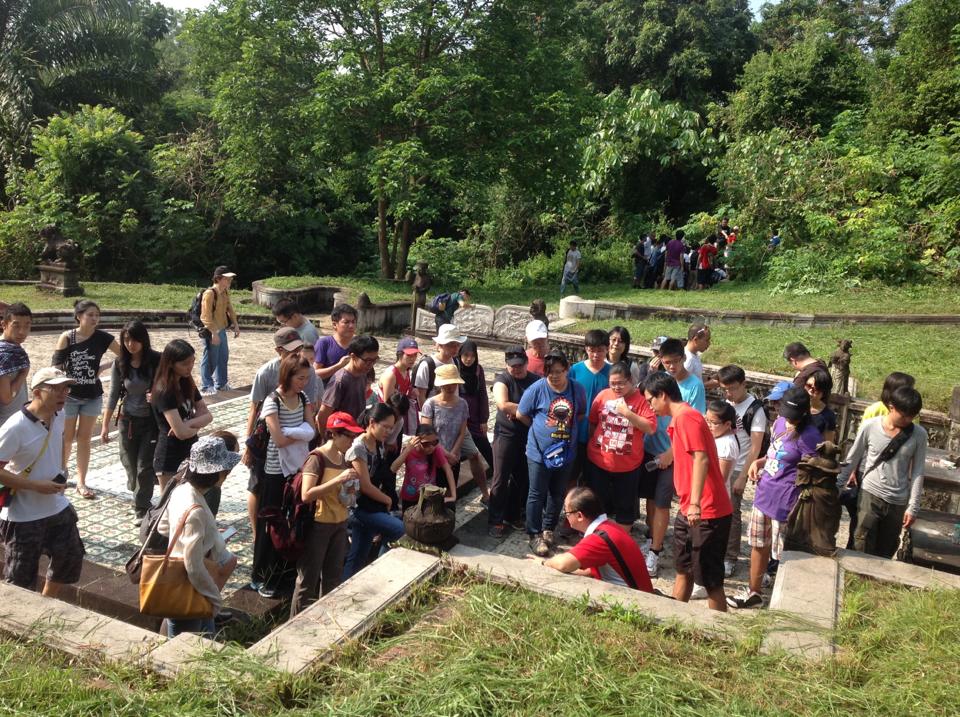
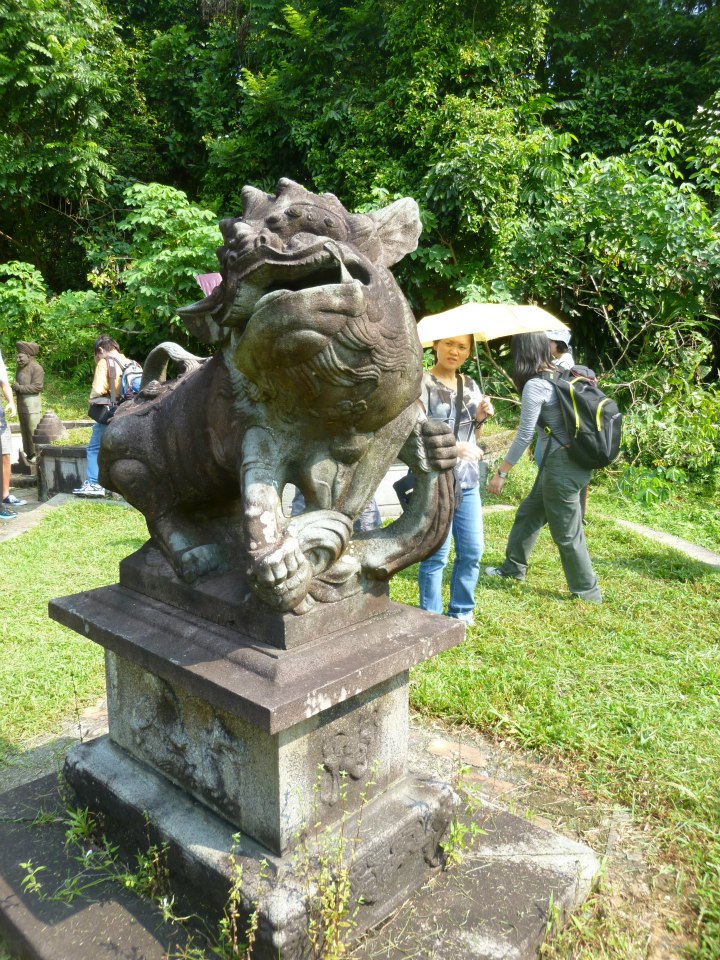


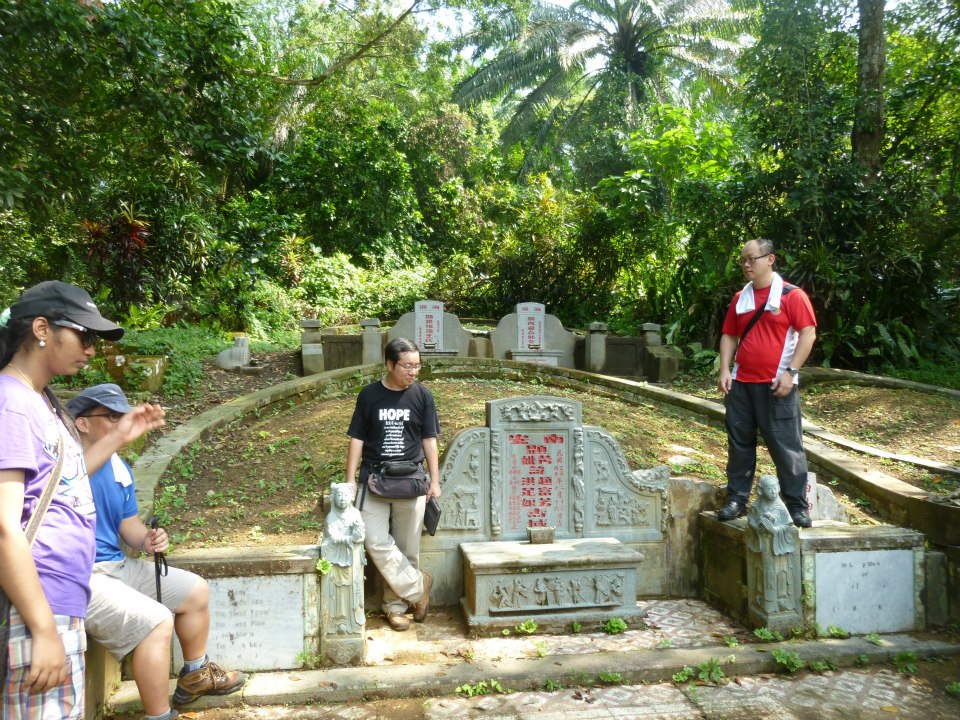
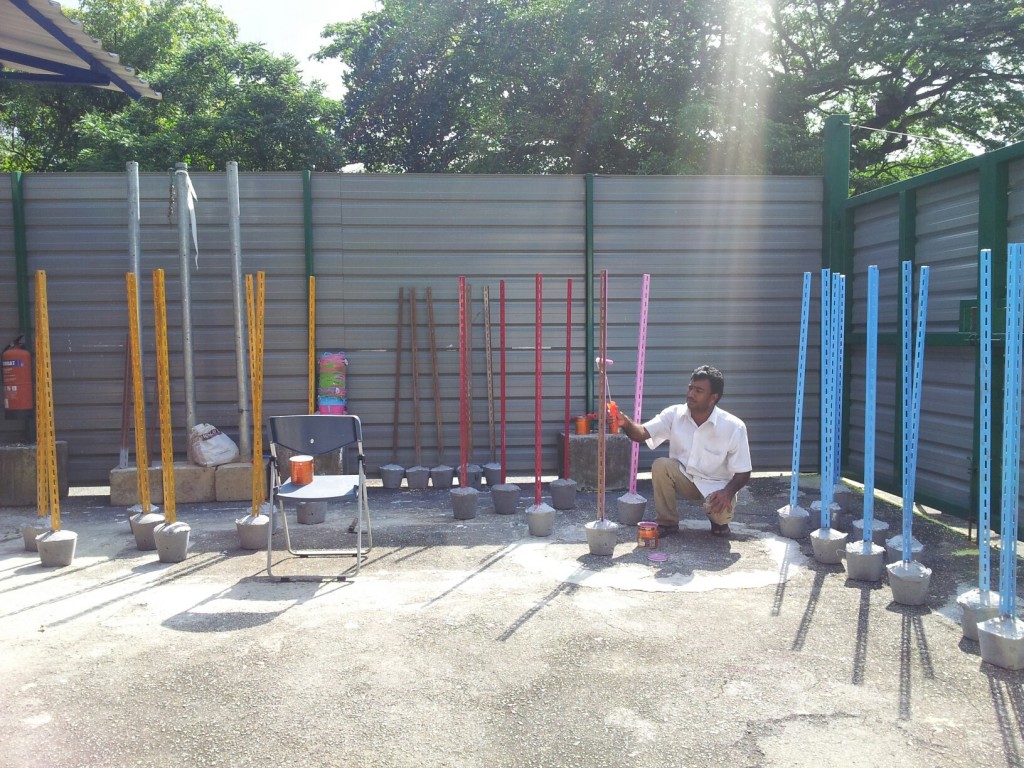
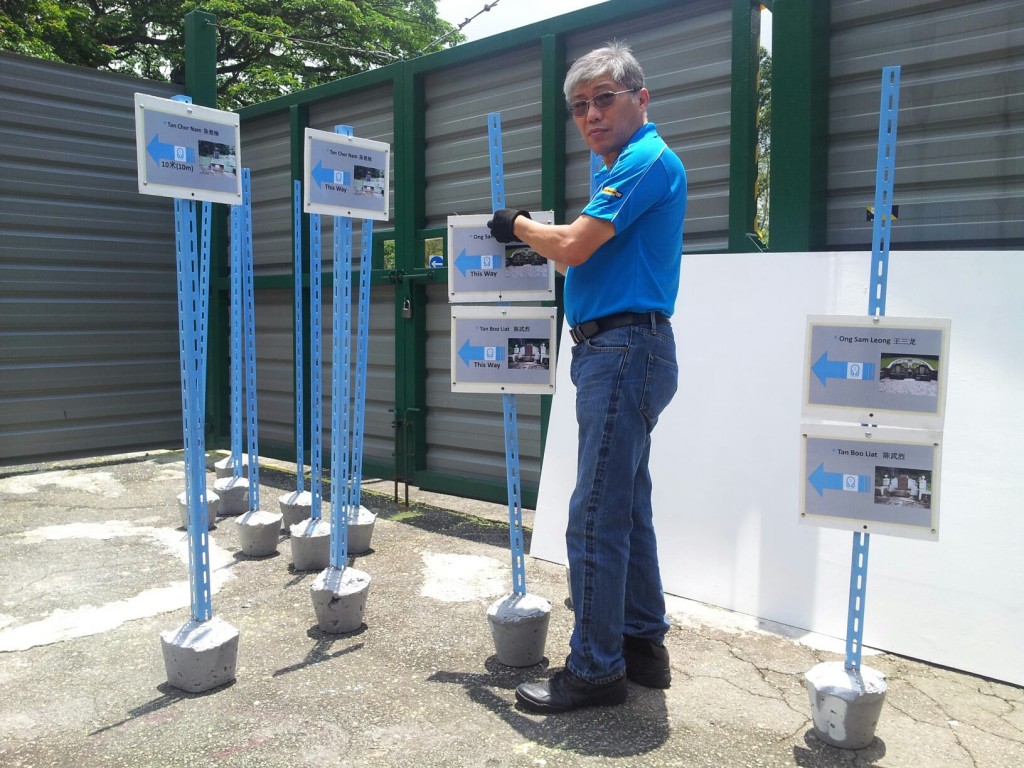
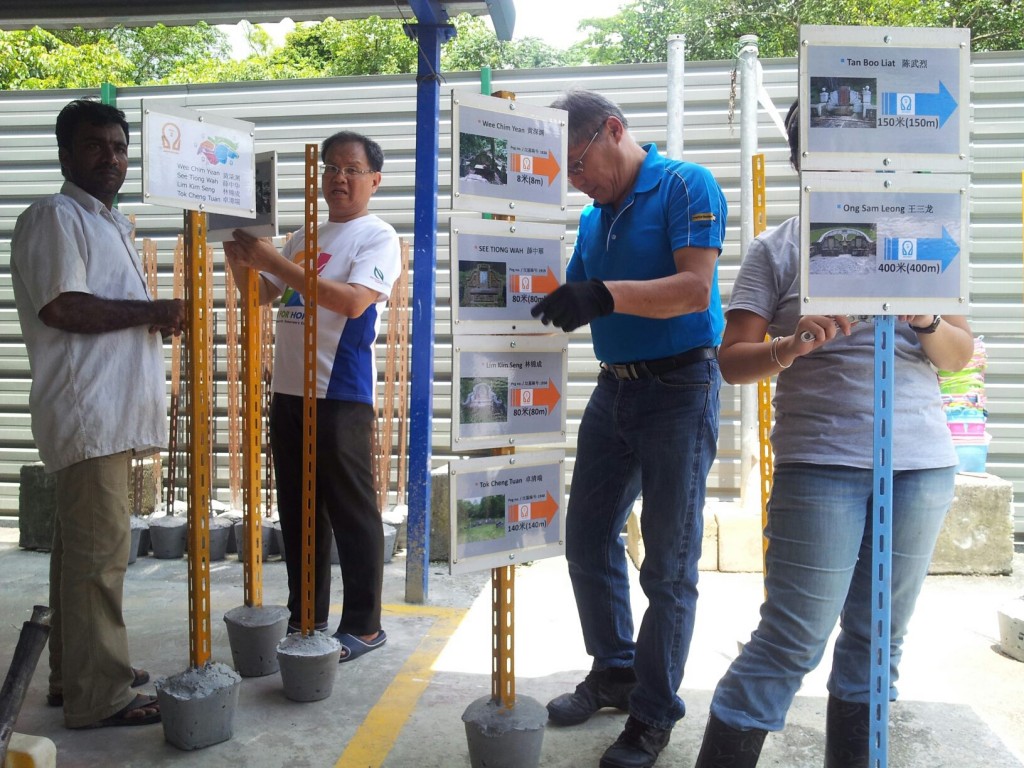
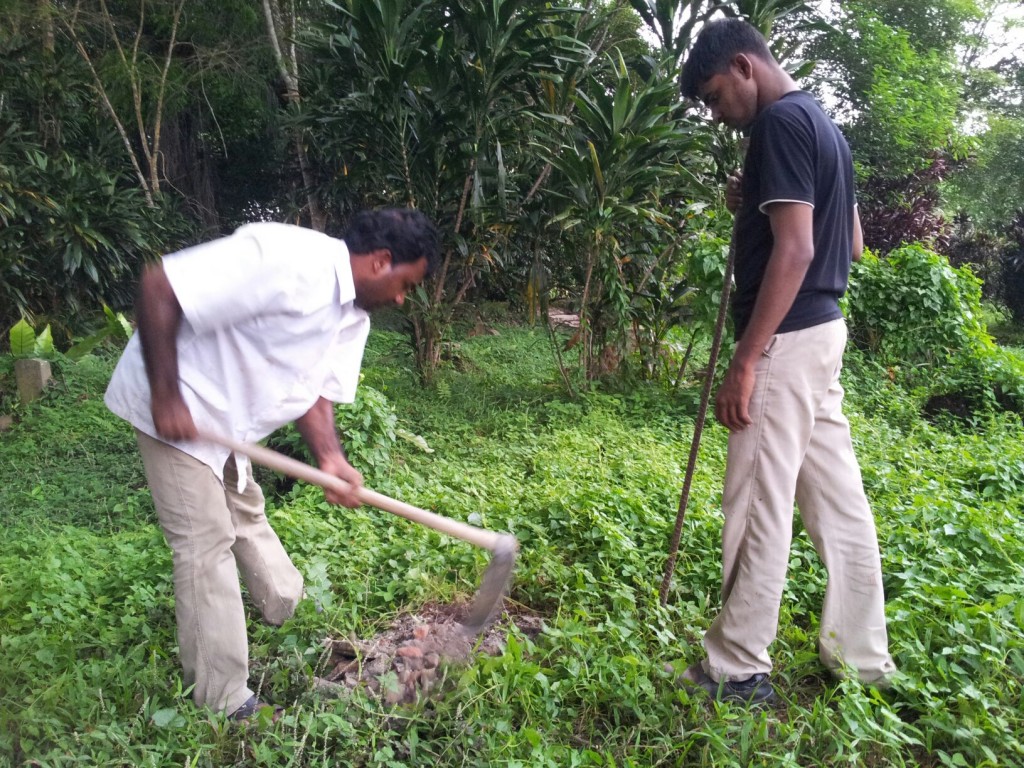
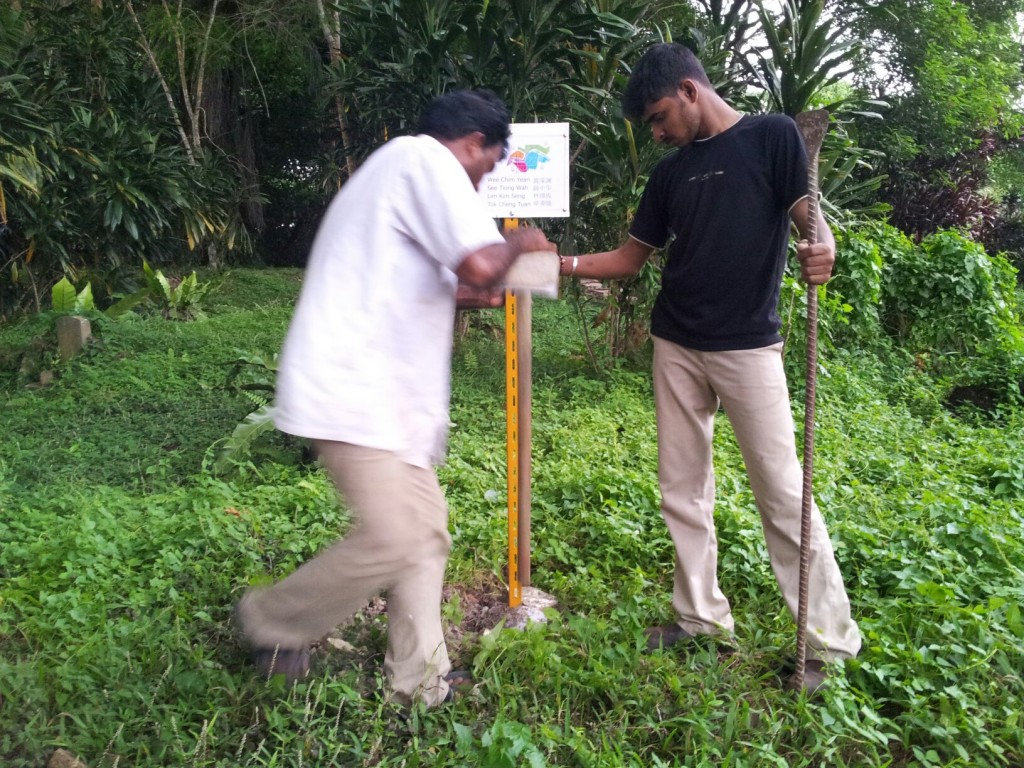

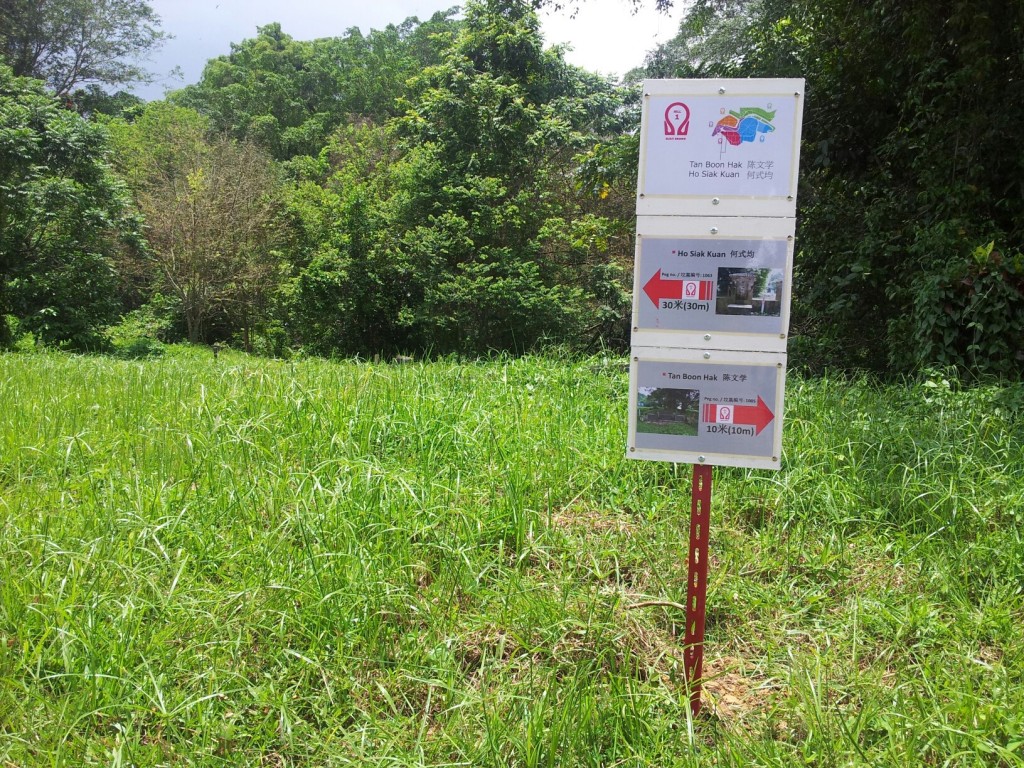

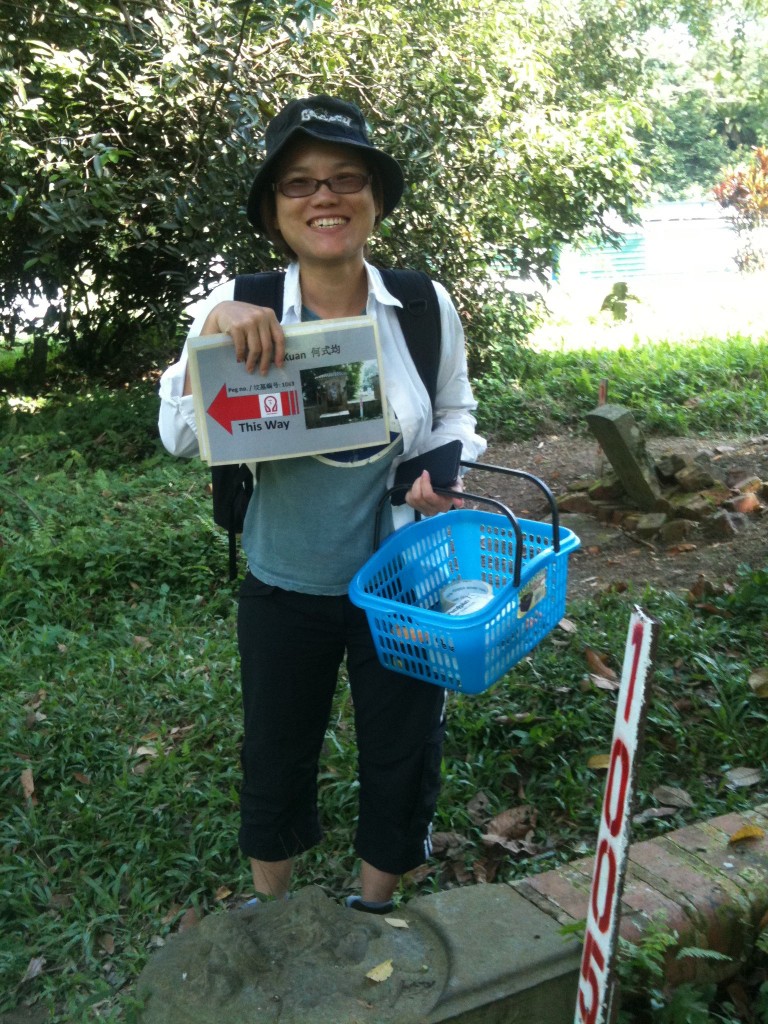


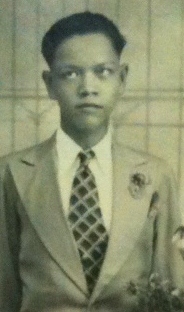

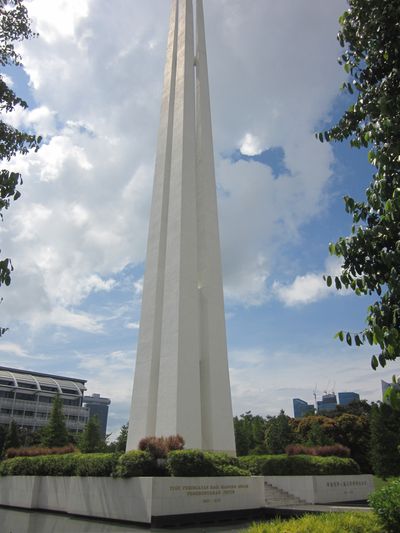
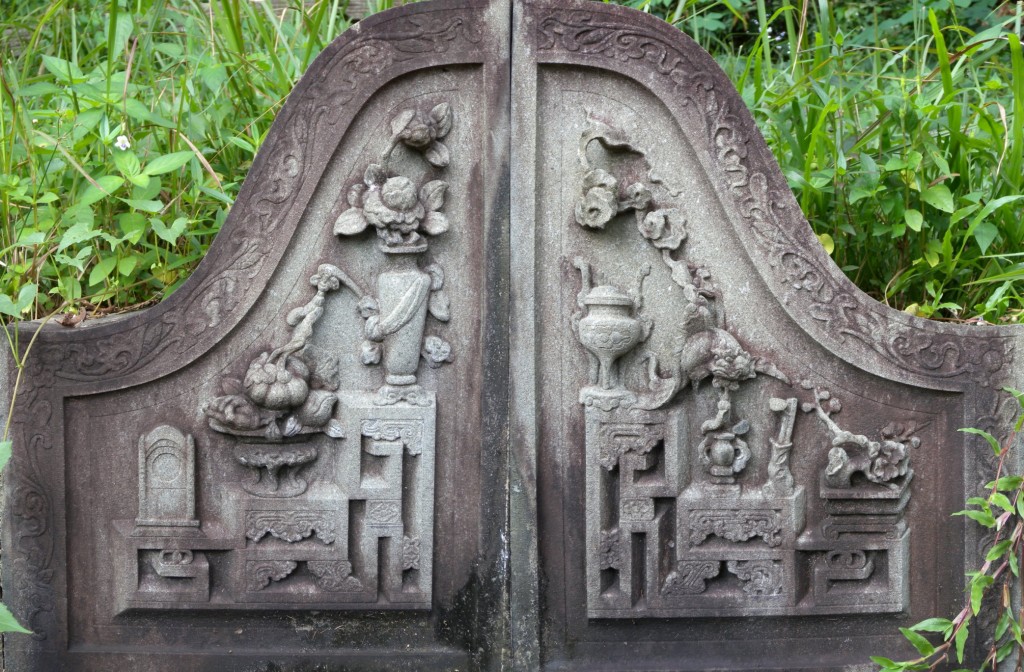
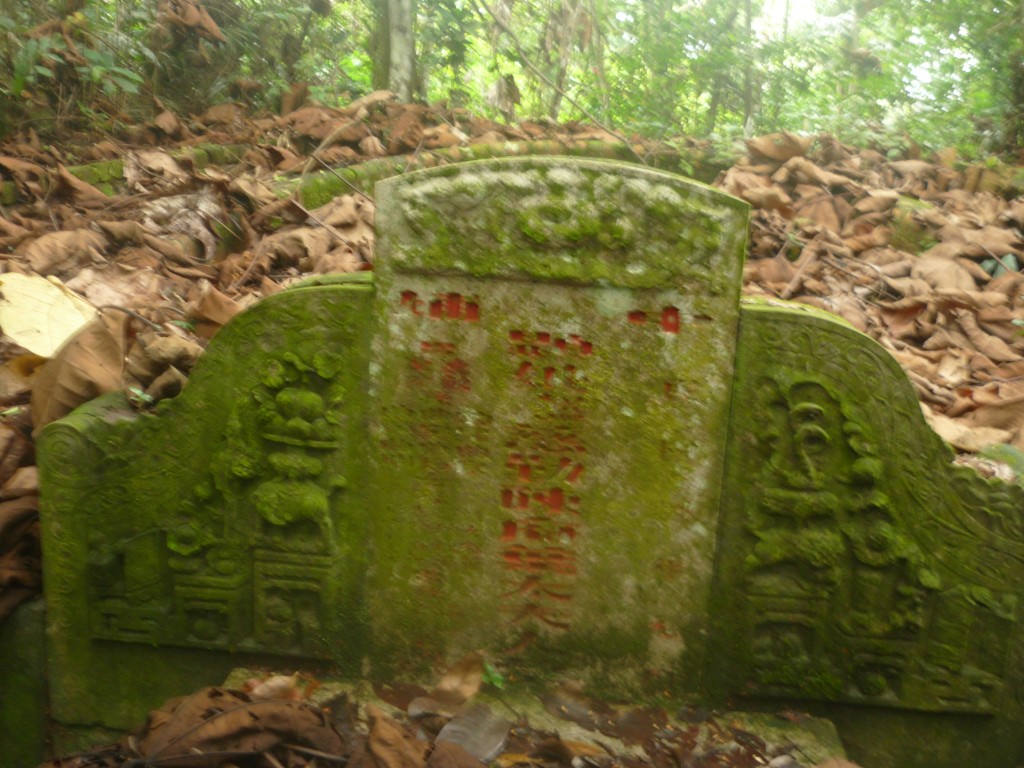
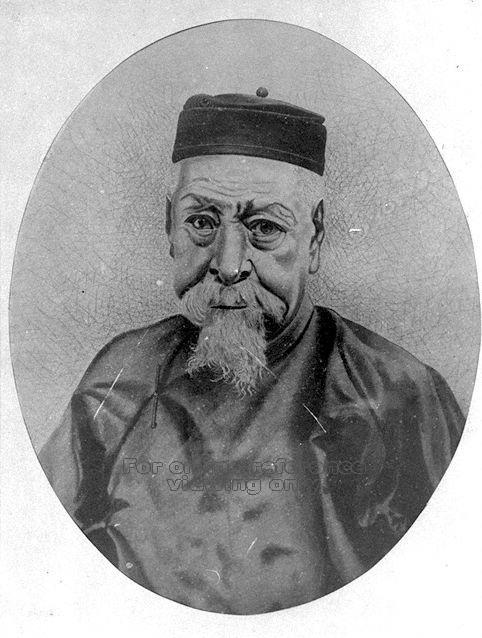
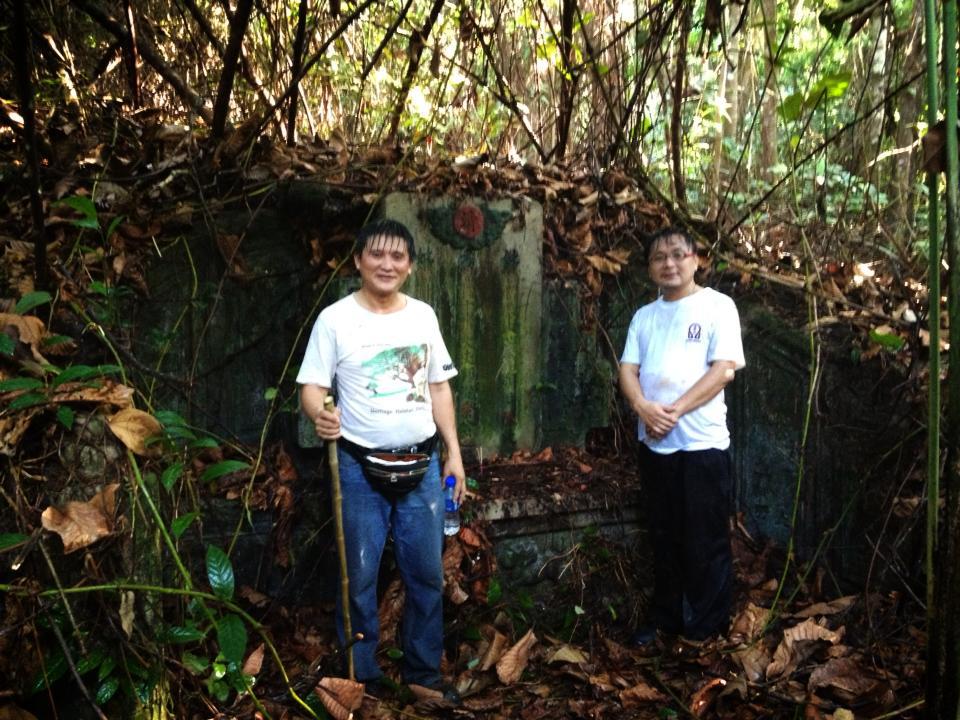

Recent Comments